Miércoles 23 febrero 2022
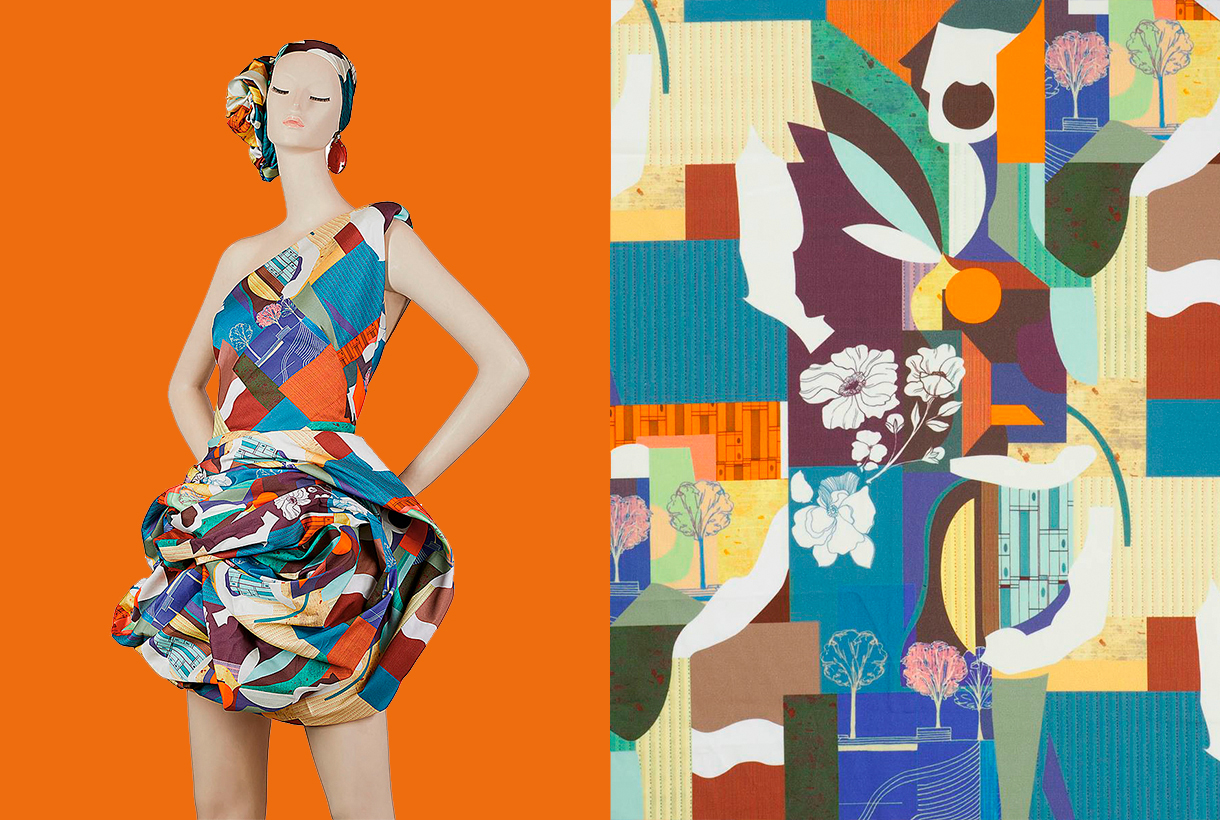 Go back, start and use for the first time. These are the verbs that we wanted to put into motion after liquidating the last winter season and presenting the new collection for next spring at Première Vision Paris. In this limbo of past and future proposals, we can only talk about the present, in this case the spring-summer 2022 collection that we are eager to show in all its splendor through the catalogue, the online store and our physical space in Barcelona.
Go back, start and use for the first time. These are the verbs that we wanted to put into motion after liquidating the last winter season and presenting the new collection for next spring at Première Vision Paris. In this limbo of past and future proposals, we can only talk about the present, in this case the spring-summer 2022 collection that we are eager to show in all its splendor through the catalogue, the online store and our physical space in Barcelona.

Roughly…
We start the season inspired by a quote from the Israeli historian and philosopher Yuyal Noah Harari : “This storm will pass, but the decisions we make now could change our lives in the years to come.” This phrase marks the course of the collection because, without neglecting the contributions of the past, our eyes are fixed on the future and on the path we have to follow to explore new territories without losing our identity.
“This storm will pass, but the decisions we make now could change our lives for years to come” – Yuyal Noah Harari
 In the context of uncertainty that we have had since the start of the pandemic, we have seen people cling to solid values such as security and trust. For this reason, the textile proposals that we present this season will focus on articles that reassure, calm, do not disappoint and, above all, are durable. We are not interested in the frugal or the unstable. This season, colour is the catalyst that will bring consumers back to the world of design and trust in it. For this reason, colour is essential to shape fabrics and plays a key role in defining new proposals. From neutral tones, to their brightest reverses, through blues and greens to bright pinks and oranges.
In the context of uncertainty that we have had since the start of the pandemic, we have seen people cling to solid values such as security and trust. For this reason, the textile proposals that we present this season will focus on articles that reassure, calm, do not disappoint and, above all, are durable. We are not interested in the frugal or the unstable. This season, colour is the catalyst that will bring consumers back to the world of design and trust in it. For this reason, colour is essential to shape fabrics and plays a key role in defining new proposals. From neutral tones, to their brightest reverses, through blues and greens to bright pinks and oranges.
In general terms, we present to you a season that we would like to be tranquil, brimming with calm, joy and optimism, but always guided by the need to make products that take into account the environment and the surroundings in which we live. Here below, we give you more details.

The colour softens
This season, colours are oxygenated and lose saturation to establish harmonic mixes and emotional combinations that calm and reassure. Neutral tones stand out, incorporating sparkles, transparencies and small brushstrokes of colour in blue, pink, green and yellow. The soft and delicate tones provide a contemporary vision and are understood discreetly, without excesses or additions.
If we discussing precisely, we highlight the beige colour of kraft paper, the white that helps us to work shapes and volumes, and the black that we will use to add sophistication and create total looks with designs of great graphic impact. As happier tones, within this palette of fresh but less saturated colours we highlight millennial pink, blue in its most multifaceted, versatile and adaptable version, and green that brings us closer to nature and continues to play a leading role in fabrics from the season. As a counterpoint, we highlight the optimism of lime yellow, attenuated orange and coral that are perfect for refreshing and adding light to items. These tones are mixed with an antagonistic hue: turquoise in a refreshing and unique combination.
Lastly, the colour will also be worked on in different ways: in plain, two-tone or multi-colour versions for a liberating and stimulating effect.
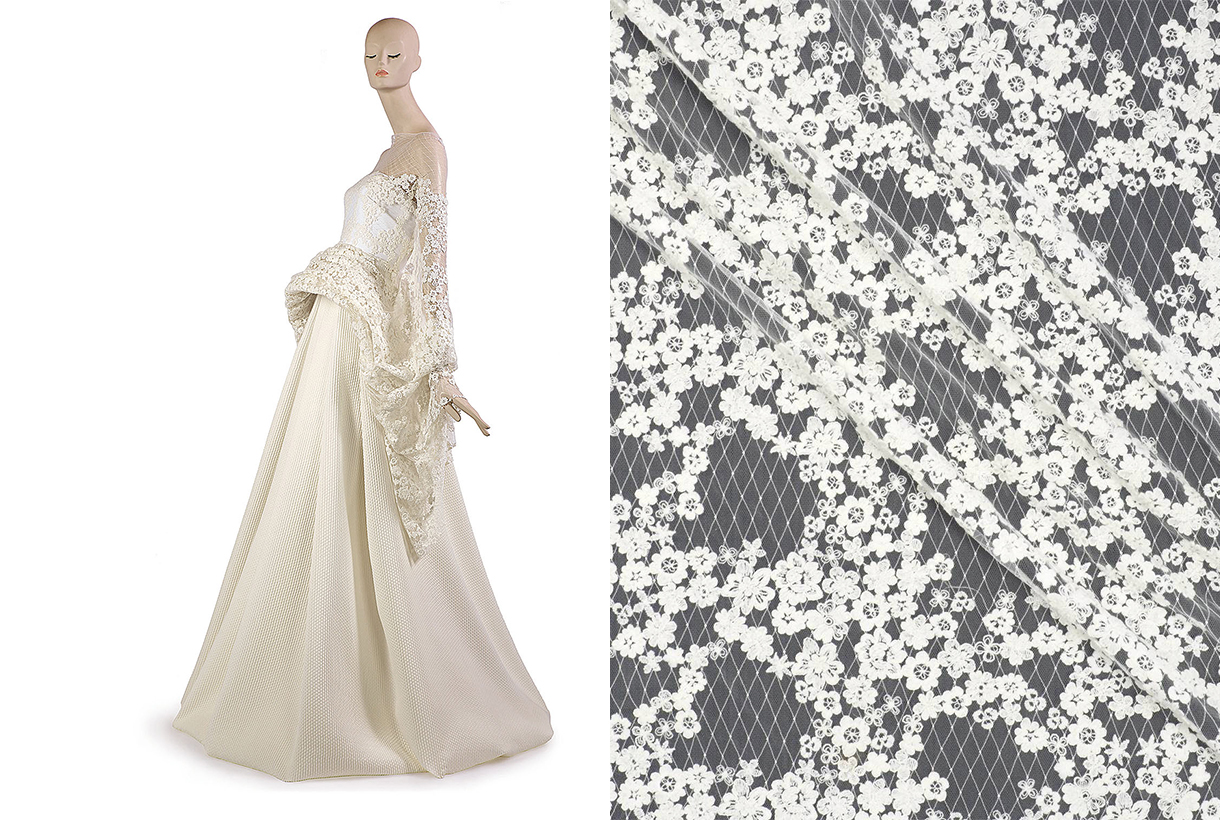
Huggable fabrics and commitment to sustainability
This season we highlight natural fibres that are involved in resource management and also recycled and regenerated synthetics. Specifically, we will work with BCI cottons, FSC viscose, tussah silk, undyed natural linens and recycled polyesters, some of them obtained from used plastic bottles.
In the spring-summer 2022 collection we want to enjoy simplicity for a more comfortable, minimalist and beautiful type of fashion. To do this, we will use gazar, voile and organza in neutral tones, gently differentiated between them, which will define the lightness of the fabrics. We want to produce that fresh and affectionate component, like a tender hug. We will also work with fil coupé techniques that connect us with a modern romanticism and weave structures with soft contrasts for simple beauty.
“We want to enjoy simplicity for a more comfortable, minimalist and beautiful type of fashion”
 Within the collection we highlight clean-looking matte poplin and satin, classic weaves, embossed reliefs inspired by cardboard packaging, Jacquards with geometric structures in rhythmic repetition, summer tweeds with thick yarns and piqués for structured weaves. This season the rustic aspect is also plays a leading role and through the fabrics we want to achieve a tactile rusticity through fancy yarns.
Within the collection we highlight clean-looking matte poplin and satin, classic weaves, embossed reliefs inspired by cardboard packaging, Jacquards with geometric structures in rhythmic repetition, summer tweeds with thick yarns and piqués for structured weaves. This season the rustic aspect is also plays a leading role and through the fabrics we want to achieve a tactile rusticity through fancy yarns.
Within the collection we highlight clean-looking matte poplin and satin, classic weaves, embossed reliefs inspired by cardboard packaging, Jacquards with geometric structures in rhythmic repetition, summer tweeds with thick yarns and piqués for structured weaves. This season the rustic aspect is also plays a leading role and through the fabrics we want to achieve a tactile rusticity through fancy yarns.
The season is also characterized by proposals with an irregular appearance through inspiring wrinkled fabrics and natural finishes, with other lighter ones such as precious organza that covers the body creating volumes without excesses, voiles that are worked in layers, gazar that provide the appropriate transparencies and sensual cotton satins that can be either plain or printed.

Refined designs that still bear the floral gardens
In general terms, the fabrics will be expressed without decorative excesses through serene geometries and visible contrasts, but without visual noise. It is not a season of excesses or shrillness, quite the opposite. We are inspired by the ethnic and folk style from a stylized and refined point of view. In terms of prints, there are fabrics that welcome abstract strokes with brushstroke details. Also the stripes with a manual stroke and the checks persist, but in their freer version.
In spring, flowers cannot be missing, and this season will not be an exception either. A walk through the country gardens brings us renewed inspirations for a new creative spin on these prints that use flowers and leaves, chosen for their particular shapes, inspiring textures and surprising colours.
Finally, it should be noted that we continue with our commitment to sustainability, which began in previous seasons and is here to stay. Our collection uses regenerated and recycled yarns with European certificates and this helps to reduce the environmental footprint of textile production: BCI cotton, regenerated cotton, tussah silk, linen, FSC viscose, New Life and recycled polyester, are some of the yarns present in this new spring-summer 2022 collection that we have just launched. Brand new, this verb that we like so much…
We invite you to discover the entire collection in our shop online!


Miércoles 09 febrero 2022
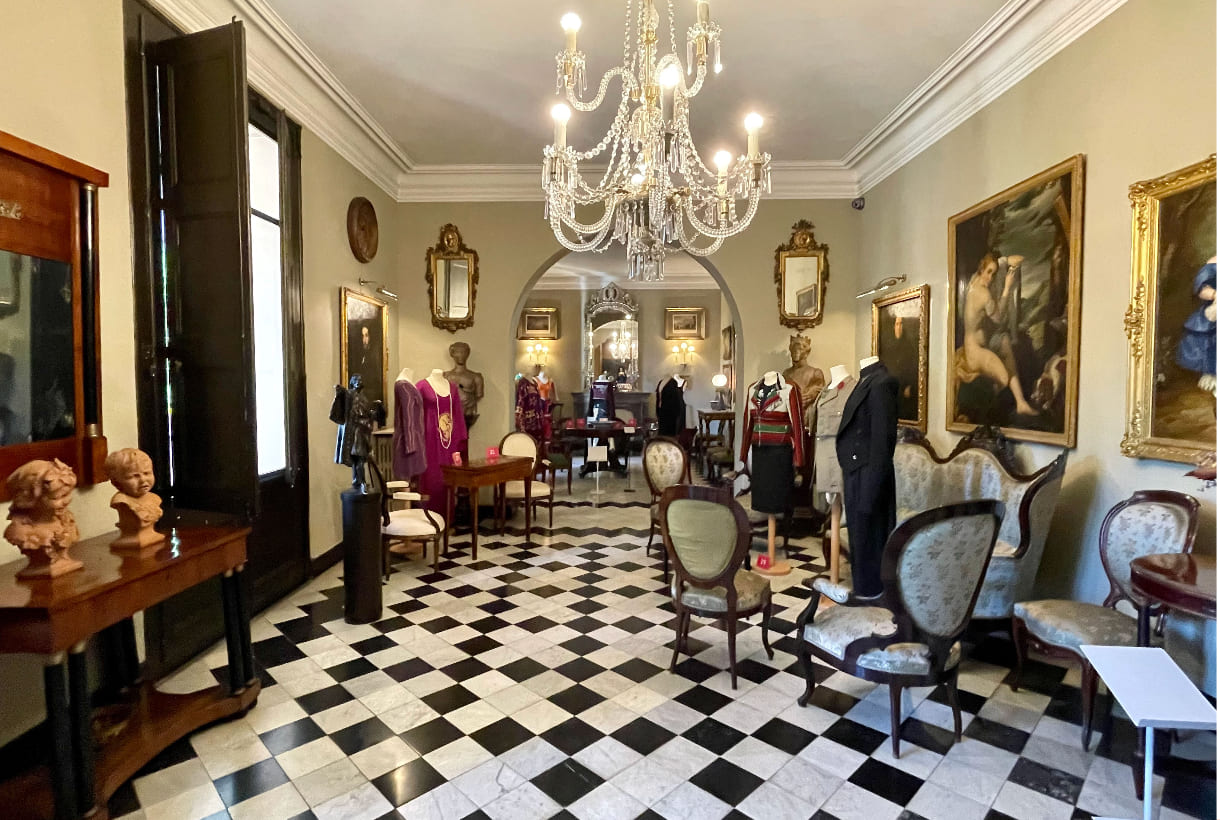 An enfant terrible is a precocious genius with brilliant ideas, but with a rebellious and transgressive attitude, whose creations are innovative and offer a new disruptive vision, far from the traditional, orthodox or conventional. John Galliano, Jean-Paul Gaultier, Alexander McQueen are some of the most international enfants terribles in fashion. In our country there are also provocateurs of the thread and the needle. Some of the most notorious names are recovered by the Fundació Antoni de Montpalau together with the Fundación Rocamora in a new exhibition entitled ‘Daviddelfín and other enfants terribles of fashion’ that opened on February 6th in Barcelona. The exhibition consists of an exhaustive compilation of the work of the designer from Malaga, unique in Catalonia, together with the groundbreaking and provocative trajectory of other Spanish designers, from the 1980s to the present.
An enfant terrible is a precocious genius with brilliant ideas, but with a rebellious and transgressive attitude, whose creations are innovative and offer a new disruptive vision, far from the traditional, orthodox or conventional. John Galliano, Jean-Paul Gaultier, Alexander McQueen are some of the most international enfants terribles in fashion. In our country there are also provocateurs of the thread and the needle. Some of the most notorious names are recovered by the Fundació Antoni de Montpalau together with the Fundación Rocamora in a new exhibition entitled ‘Daviddelfín and other enfants terribles of fashion’ that opened on February 6th in Barcelona. The exhibition consists of an exhaustive compilation of the work of the designer from Malaga, unique in Catalonia, together with the groundbreaking and provocative trajectory of other Spanish designers, from the 1980s to the present.

The most extensive work of David Delfin
The monographic part dedicated to David Delfín occupies the first floor of the Rocamora Foundation and brings together more than 60 pieces of clothing that review the designer’s collections, from 2001 to 2017, with some of the most emblematic works. Along with the pieces of clothing, a selection of accessories such as bags and shoes is also included.
Although Diego David Domíngez González, David Delfín, had already carried out some previous experiments, his homonymous brand would be born in 2001 in a joint project with the Postigo brothers (Deborah, Gorka and Diego) and Bimba Bosé, the designer’s muse and model. This innovative project went beyond fashion, mixing theatre, music, painting, poetry, photography and cinema. As a brand, Davidelfín debut in Barcelona on the alternative catwalk show Circuit with its first ‘Openin’ Nite’ collection. A year later he make the leap to the Cibeles catwalk in Madrid with the proposal ‘Cour des Miracles’, inspired by Luis Buñuel’s films ‘Viriadina’ and ‘Belle de Jour’ and also in the painting ‘Los Amantes’ by René Margritte , painted in 1928, showing two hooded lovers kissing.
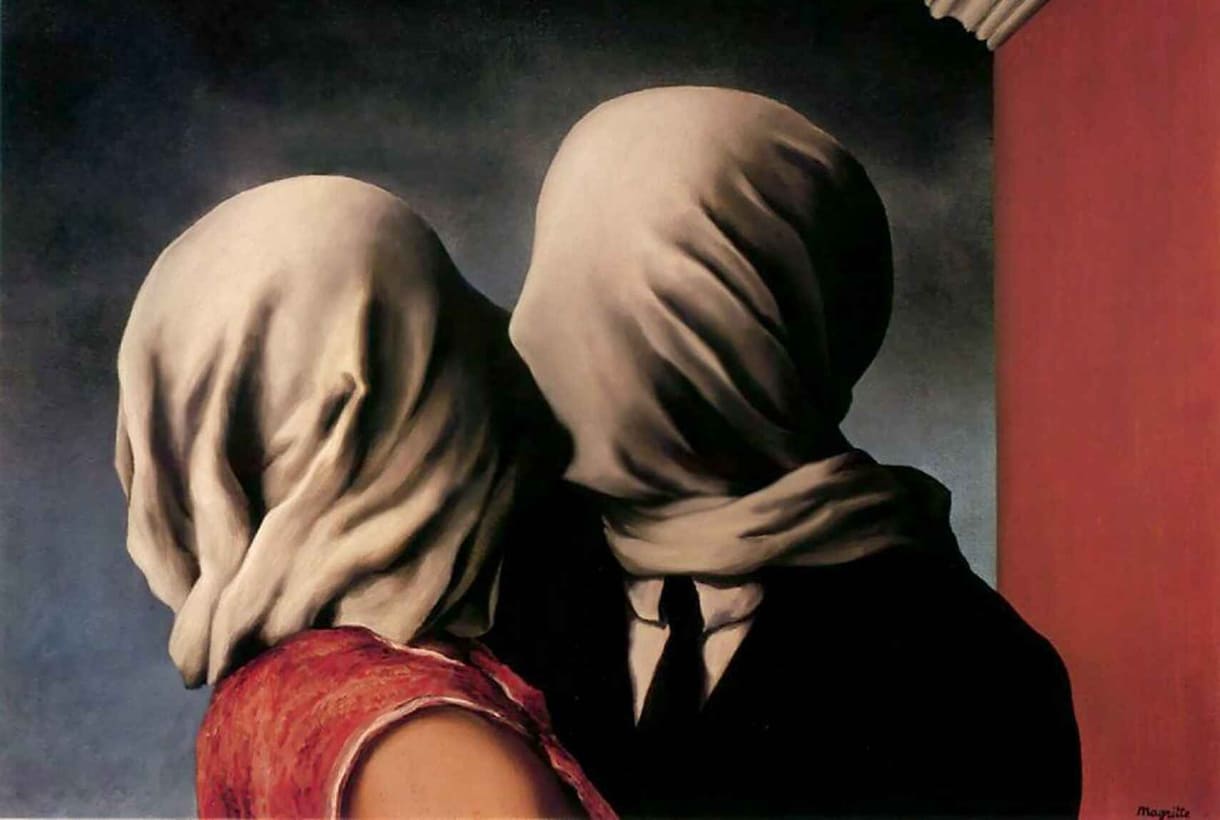
As a tribute to Magritte’s painting, the models paraded down the catwalk with hooded faces reminiscent of Arab burkas, ropes around their necks and large wooden rosaries, some garments made with sanitary bandages. This parade was misunderstood and criticized in the media, perhaps for coinciding with the war in Afghanistan. Despite the controversy, this show positioned the brand and a year later, Davidelfín would receive the L’Oreal award for young designers. From this moment on, the designer’s self-taught creativity had no limits: Bimba Bosé would be the indispensable protagonist of his fashion shows and among the public and their friends, they would become his best ambassadors. The designer continued to present his collections at Cibeles and made the leap to New York in 2009 and 2010. The brand was also awarded at Marie Claire, Telva and in 2016, won the National Fashion Design Award. Davidelfín also participated in numerous museums, institutions and art galleries in Barcelona, Madrid, Bilbao, Málaga, Venice, New York, Washington, Mexico, Tokyo and Moscow. Unfortunately, the promising creator’s career was cut short in 2017 after an intense battle with brain cancer, a few months after Bimba’s death. David Delfin was only 46 years old.
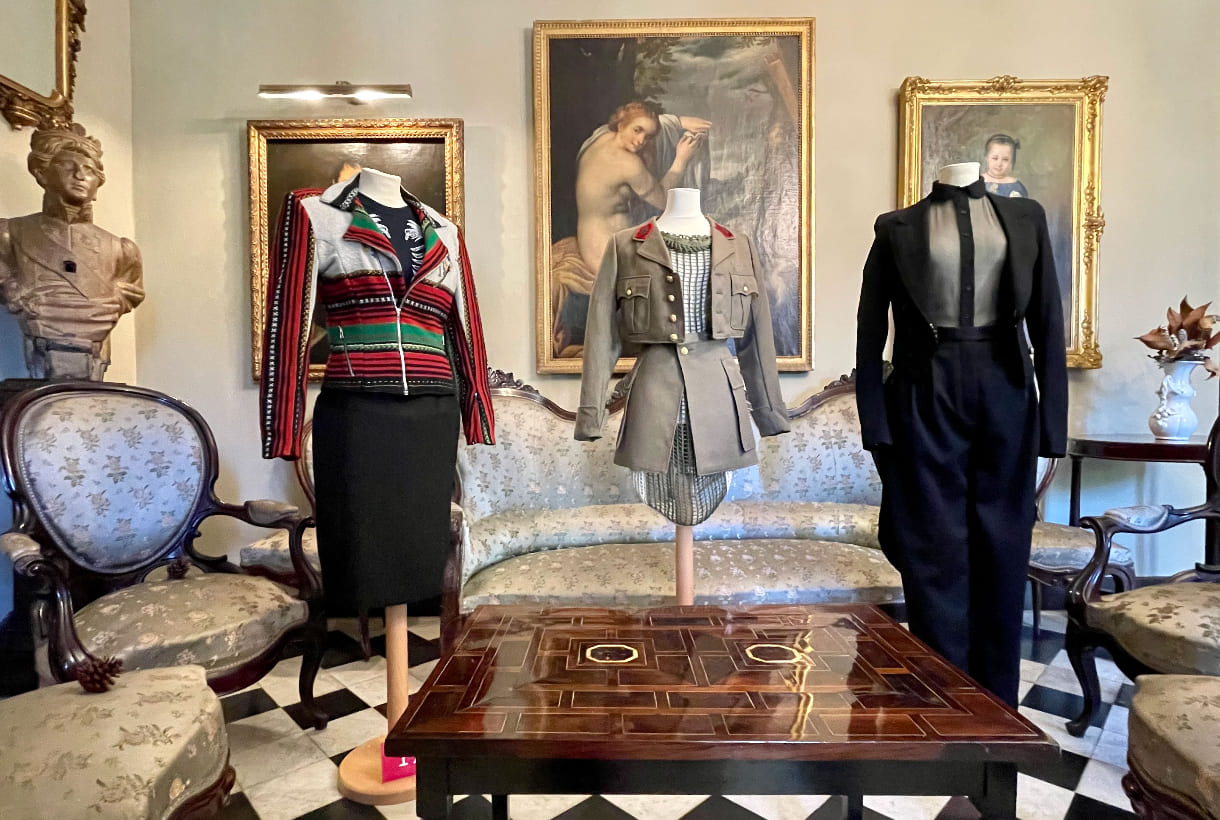
The other enfants terribles
The exhibition goes one step further and to accompany the tribute to Davidelfín, the Fundació Antonio de Montpalau has chosen a series of designers who have also known how to break the mold and occupy the ground floor of Manuel Rocamora’s summer mansion.
Thus, this second part of the exhibition begins with Luis Fortes, the controversial designer of the 1980s in Barcelona with very daring proposals that even anticipated those that Thierry Mugler, a recently deceased French creator, would make shortly after.
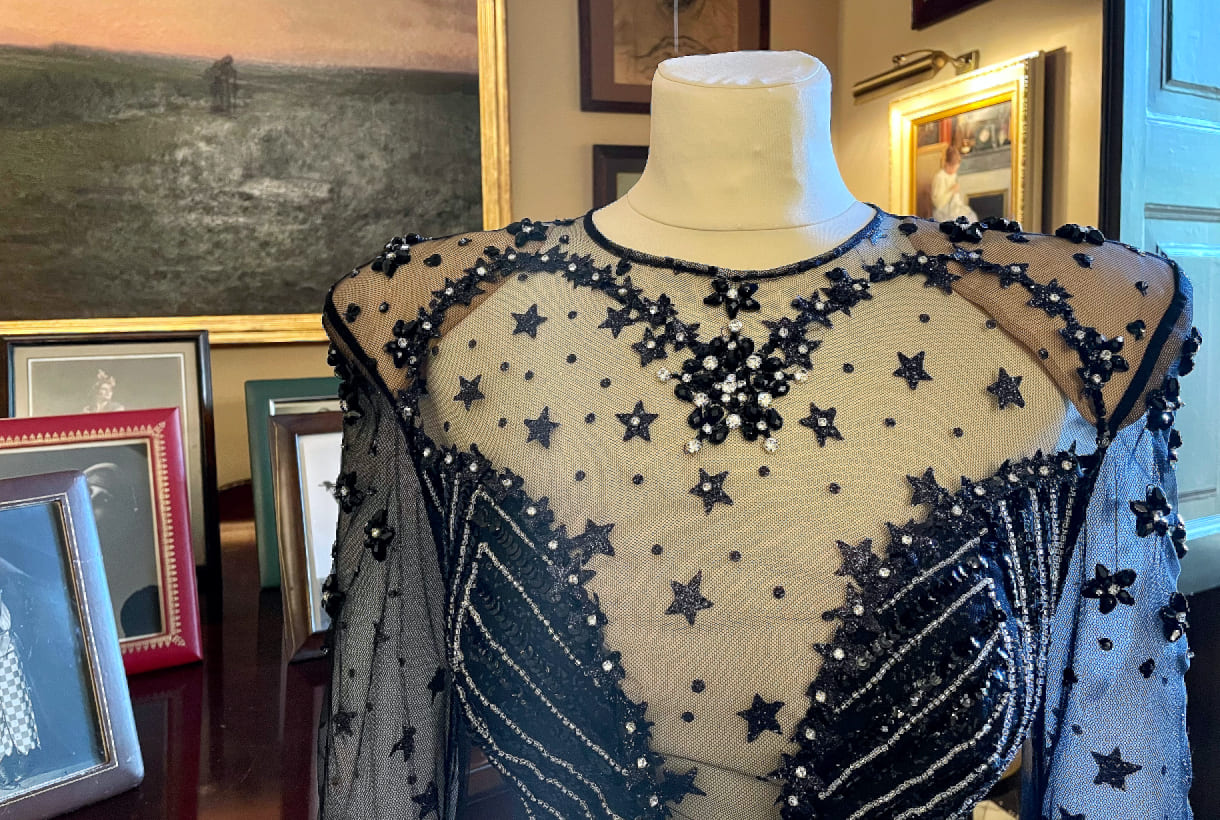
From Madrid in the 1990s, the Vacas Flacas duo, made up of Carolina Azcona and Miriam Cobo, would create a fuss at the Cibeles Catwalk with their garments made of cloths, gloves, towels, socks, zips or scarves. A good selection of that can be seen in the exhibition, along with a spectacular coat made with Barça scarves. Recently the actress Milena Smit has resurrected one of the most emblematic t-shirts of the Madrid firm. The sample also includes five spectacular Alaskan costumes, designed by Juan Pedro del Moral, Little Joe Couture, who has also designed the styling of the Blonde Nancys. In fact, the brand is also in charge of dressing the members of Fangoria. Also from the 1990s are the two pieces included in the exhibition by Estanislao, the creator of the renowned Eometric pattern-making method.

For her part, Bibian Blue, a designer famous for her bodysuits worn by international artists such as Katy Perry or Dolly Parton, was one of Luis Fortes’ most outstanding students in the 1990s and created her own brand in 2000, achieving great acceptance within the European underground scene. The sample includes one of her spectacular butterfly wing dresses.
The exhibition also makes reference to Mertxe Hernández. The designer created her MTC brand in 1997 and opened a store in El Born, where she became known. After presenting collections in Germany, the creator decided to dedicate herself to the world of artistic creation. Some of the garments that she presented on the ‘Colonia Fashion Days’ catwalk, made with polyamide stockings, are included.
Finally, the exhibition also brings together iconic garments from Gori de Palma (Modafad, Gaudí and Cibeles) and ¡Ánimo, Valiente! The firm of a Basque designer based in Barcelona who works with recycled jeans and from a decided marginality. Who also deserves a special mention is the latest designer to participate in the show: the current and mediatic Palomo Spain, who included one of the most emblematic suits of his meteoric career.


 The year has not exactly started on the right foot due to the new health restrictions to stop the continuous outbreaks of the pandemic. Even so, this 2022 promises to be different from its predecessors with the arrival of a cultural agenda, full of new exhibitions that we can visit in person in different cities throughout Spain. Great retrospectives, unpublished works by renowned artists or artistic movements that also connect art with fashion and design. We present five samples that we believe can be a source of creativity and inspiration for any creative work.
The year has not exactly started on the right foot due to the new health restrictions to stop the continuous outbreaks of the pandemic. Even so, this 2022 promises to be different from its predecessors with the arrival of a cultural agenda, full of new exhibitions that we can visit in person in different cities throughout Spain. Great retrospectives, unpublished works by renowned artists or artistic movements that also connect art with fashion and design. We present five samples that we believe can be a source of creativity and inspiration for any creative work.

-
From Fauvism to Surrealism: masterpieces from the Musée d’Art Moderne in Paris
-
When? From February 11th 2022 to May 22nd, 2022
-
The audacious expression of freedom shown by the Fauvist and Cubist artists at the birth of both movements in the first decade of the 20th century was a revolution in the traditional representation of portraiture, landscape and still life that was considered scandalous at the time, as present disruptive canons with the observed reality. ‘From Fauvism to Surrealism: Masterpieces of the Musée d’Art Moderne de Paris’ brings together about 70 masterpieces that portray the history of the famous Parisian museum and show the pictorial transgression of the time. This museum is today an essential artistic reference that houses some of the avant-garde movements that revolutionized the capital of the Seine during the first decades of the 20th century.
In turn, this exhibition is the first major exhibition that the Guggenheim Museum Bilbao will host in 2022 within the program of activities scheduled for this cultural and sculptural complex, which will celebrate the 25th anniversary of its opening in October.

-
Cinema and fashion. By Jean Paul Gaultier
-
When? From February 17th to June 5th 2022
-
Film and fashion have been linked over the years to lead to a fruitful creative exchange. Under the gaze of Jean Paul Gaultier, this exhibition points out the communicating vessels of both industries, as well as an approach to their social contexts. The exhibition addresses the exchanges and influences that occur between cinema and fashion, a creative relationship led by Jean Paul Gaultier, co-curator and artistic director of the exhibition. Beyond mythomania, “Cinema and Fashion” covers the contexts of creation, both for dresses and films, and introduces us to ideas of modernity within clothing or eroticism. The show also offers a sociological approach by addressing issues such as female emancipation movements, gender transitions and power roles and how these are reflected in the fashion and filmography of its time.
“Cinema and Fashion” collects posters, photographs, film clips … up to 250 pieces that reflect the dialogue between the two disciplines. The exhibition begins with ‘Falbalas’, Jacques Becker’s 1945 film that influenced Gaultier to become a designer. After that, some of the characters that revolutionized the codes of cinema and sexuality are observed, such as Mae West, Marilyn Monroe, Marlon Brando, Brigitte Bardot or Jane Fonda. The exhibition will migrate to Barcelona from July 6.

-
The Magritte Machine
-
When? From February 24th to June 6th 2022
-
Meanwhile, at the Caixa Forum in Barcelona, René Magritte (Lessines, 1898 – Brussels, 1967) will be leading the main exhibition in an extensive retrospective dedicated to the Belgian surrealist artist that explores his attractive work, characterized by playing with visual logic and question our perceptual categories. This is Magritte’s first exhibition since 1989 in Spain and brings together a selection of 65 paintings from museums and collections around the world, along with a selection of photographs and home movies taken and filmed by the artist.
And why is it called The Magritte Machine? In 1950, in collaboration with some friends, the Belgian artist wrote the leaflet ‘La Manufacture de Poésie’, a catalogue of imaginary products amongst which the “Universal Painting Machine” stands out. Such a machine would make it possible to compose in a practical way an unlimited number of thinking pictures. The exhibition starts from the hypothesis that this Magritte Machine exists and is composed of several interconnected devices corresponding to recurring concepts in the artist’s work, such as mimicry and megalomania.

-
Teresa Lanceta. Weave as open source
-
When? From April 8th to September 11th, 2022
-
At the beginning of the 70s, Teresa Lanceta (Barcelona, 1951) made the decision to weave as a means of artistic expression, forcing the limits of understanding about what is or is not considered art. Her approach to weaving focuses on formal elements, on what fabrics are original and their own: their ligaments, materials, traditions and techniques. A way of doing without a previous sketch in which image and background, object and language, support and image are built at the same time, without going backwards, assuming mistakes.
Teresa Lanceta’s work reflects her vision of fabric and the act of weaving, but goes beyond individual expression by setting up dialogues in parallel with popular art, gender issues, non-verbal communication or the different forms of life in community. This exhibition, which brings together the entire career of the Catalan artist up to the present, includes a wide selection of tapestries, canvases, paintings, drawings, writings and videos, as well as several collaborations that Teresa Lanceta has done with other authors and which will be shown in the course of the exhibition.

-
Pablo Picasso and Gabriele Chanel
-
When? From October 11th 2022 to January 15th 2023
-
Beyond fashion, Gabrielle Chanel maintained friendship with multidisciplinary artists, one of them was Pablo Picasso, whom she met around the spring of 1917, probably through Jean Cocteau or Misia Sert. The designer established a long and lasting friendship with both of them that would introduce her to the Spanish painter’s circle. From that moment, Chanel and Picasso established a creative relationship in which, among other influences, two collaborations emerged, both with Jean Cocteau: in ‘Antígona’ (1922) and in Sergei Diaghilev’s Russian ballet ‘Le Train Bleu’ (1924).
The Thyssen Bornemisza museum in Madrid invites us to explore this creative relationship of the 20th century, bringing together art and fashion in the same exhibition project. ‘Picasso and Chanel’, led by Paula Luengo, Curator of the Exhibition Area, explores the relationship between these two great geniuses of the 20th century with designs and works of art organized in four sections that follow a chronological order: between 1915 and 1925. Also it is appreciated how the painter’s work was a source of inspiration for some of Chanel’s designs. The designer herself used to talk about her friendships with the artistic and intellectual world of the time: “it is the artists who have taught me rigor”.
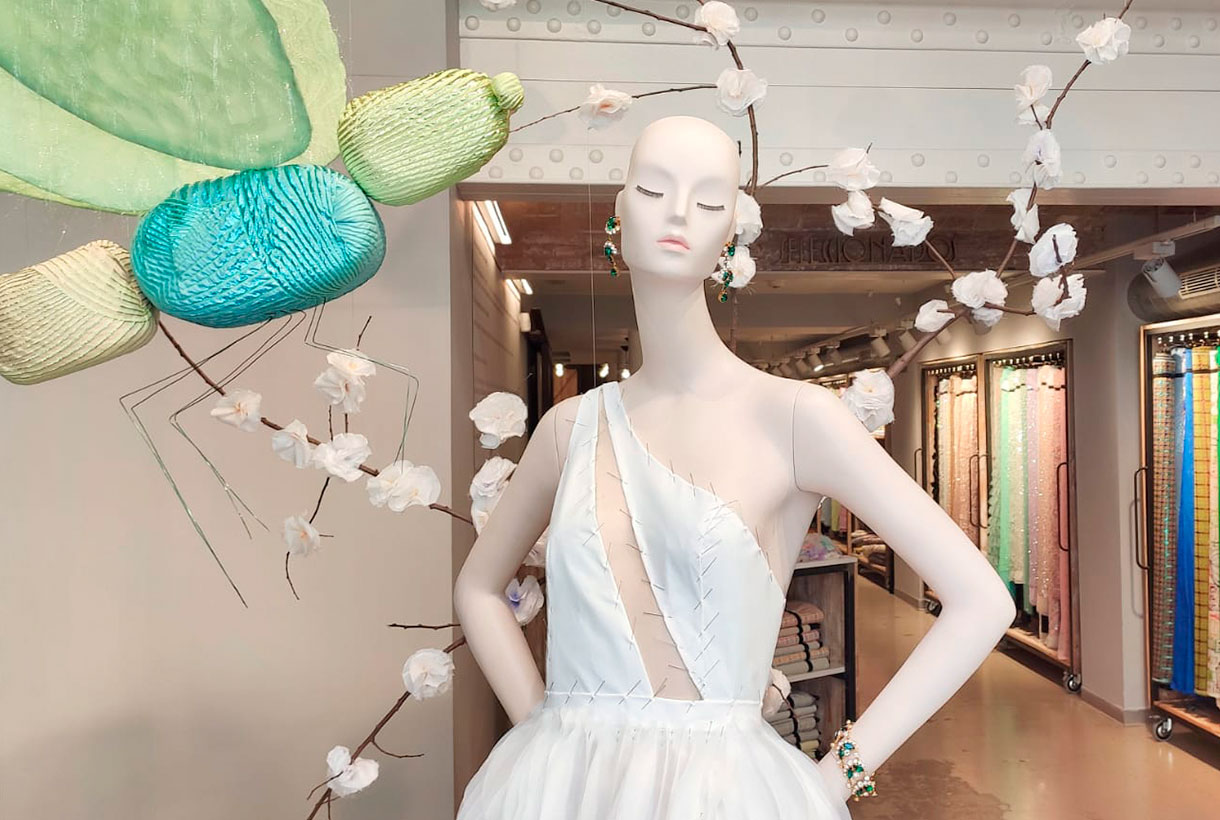
The showcase is a visual presentation of who we are, what we do and how we do it. An aesthetic entrance that attracts the visitor, but also justifies our work: the creation of quality fabrics that allow you to dream. During this uncertain year we have tried to surprise you with artistic windows that play with concepts that represent us such as luxury, elegance, fantasy, escape or everyday life through our mannequins that have been dressed in the most spectacular fabrics of the season along with other elements that we hope have surprised you. A wedding moulage, a chic picnic or a female interpretation of the Magi. These are some of the scenes that you have been able to observe through the window of our Gratacós space.
Now, before welcoming the new year, we take advantage of this post to say goodbye to 2021 with the certainty that it has been a year of transition that has allowed us to remain stable thanks to the cohesion between teams and your support and trust in this brand of family fabrics. We have new perspectives for 2022 and we want to move forward with new articles that will stand out for their quality, creativity and ability to surprise. Get excited, in short. Happy New Year!
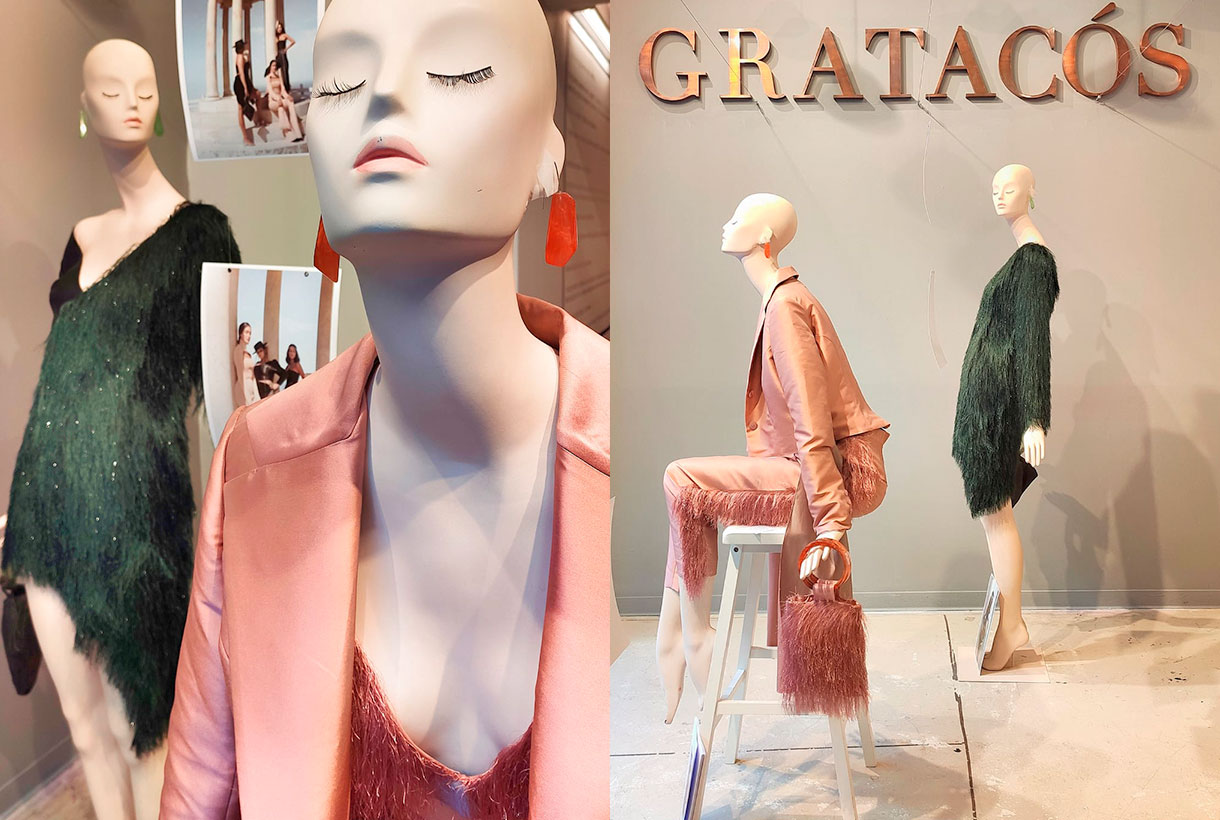
March 2021. New direction
One year after the start of the pandemic, we awake dreaming of planning the upcoming holidays with a relaxation of restrictions. Easter, the May bank holidays and the not so distant summer disconnection. The beginning of spring also marked a minimalist-inspired showcase featuring two mannequins dressed for the occasion to pay tribute to those bridal celebrations that were returning to the fore. Tailoring, feather details and two antagonistic tones that capture the incipient change of season: forest green and dusty pink.
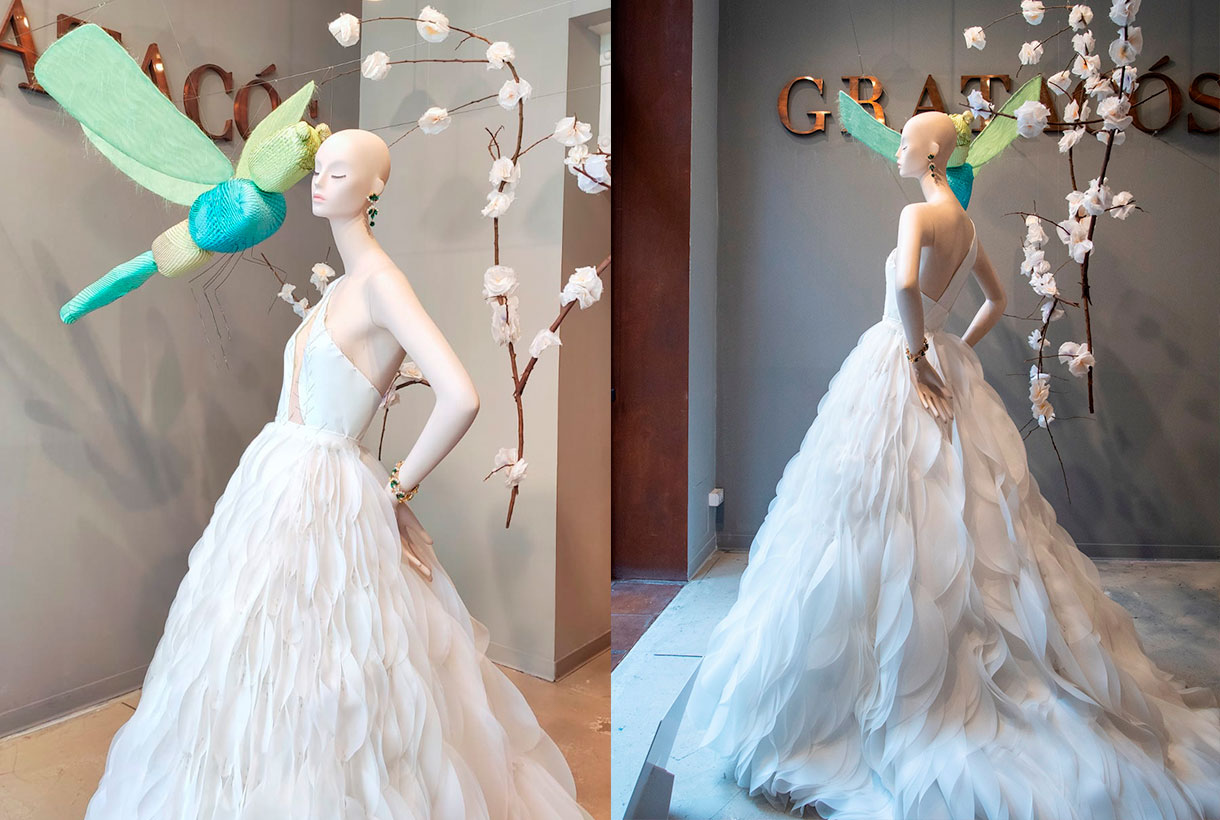
April 2021. Wedding bells
As tradition dictates, April is the bridal month par excellence and from Gratacós we always reserve this shop display to show off the work of one of the winners of the IED Barcelona. wedding dress design postgraduate moulage contest. This is an opportunity we offer to showcase the work of new talents in bridal design. This year, Eva Escudero created this impressive wedding dress with an asymmetrical design and a large flowing skirt, following in the footsteps of this unique tailoring technique.
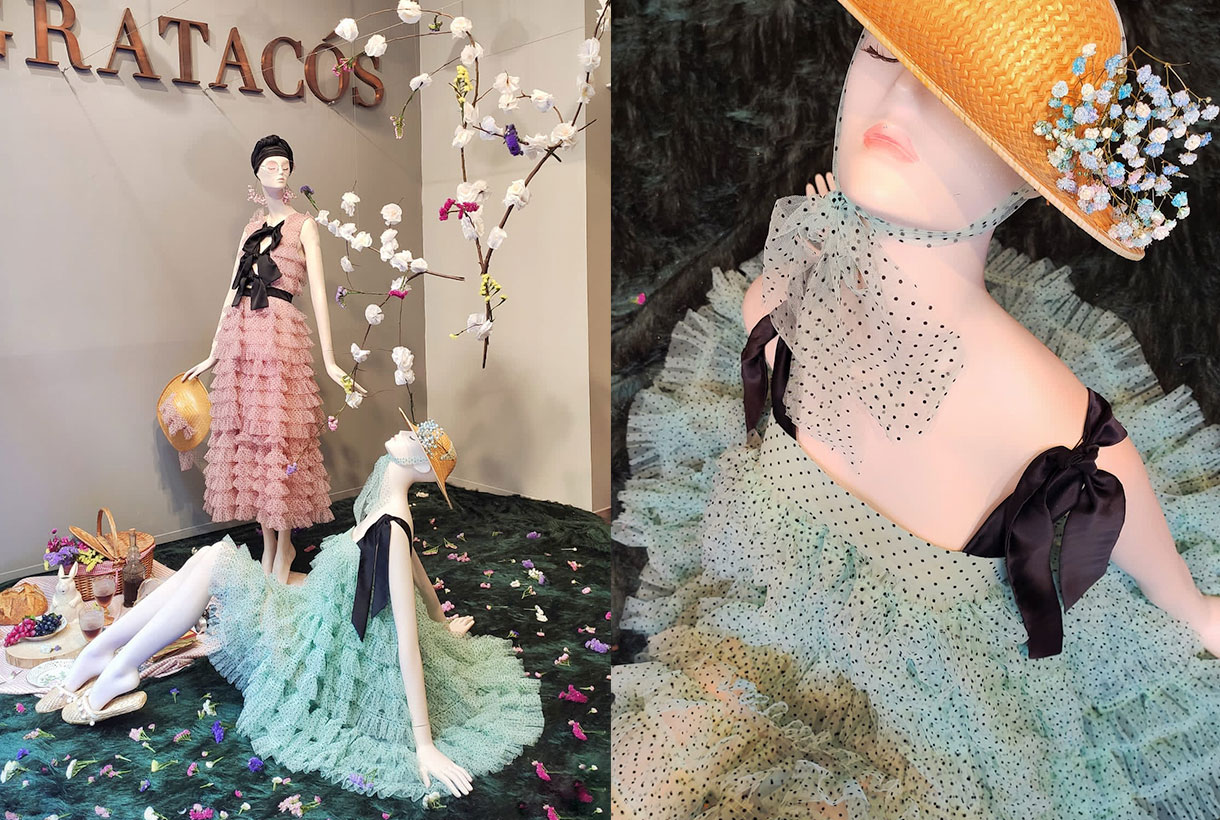
May 2021. Country spirit
In the month of flowers, the Joplin Atelier company of the sisters Laura and Aida Molano turned our entrance space into an urban picnic with a Provencal air. The tulle dresses with small polka dots made with our fabrics, the details in bows and the pastel tones starred in a chic showcase with a multitude of details to carry out this picnic in the open air. An artistic representation that portrays the spirit of escape that connects us with nature.
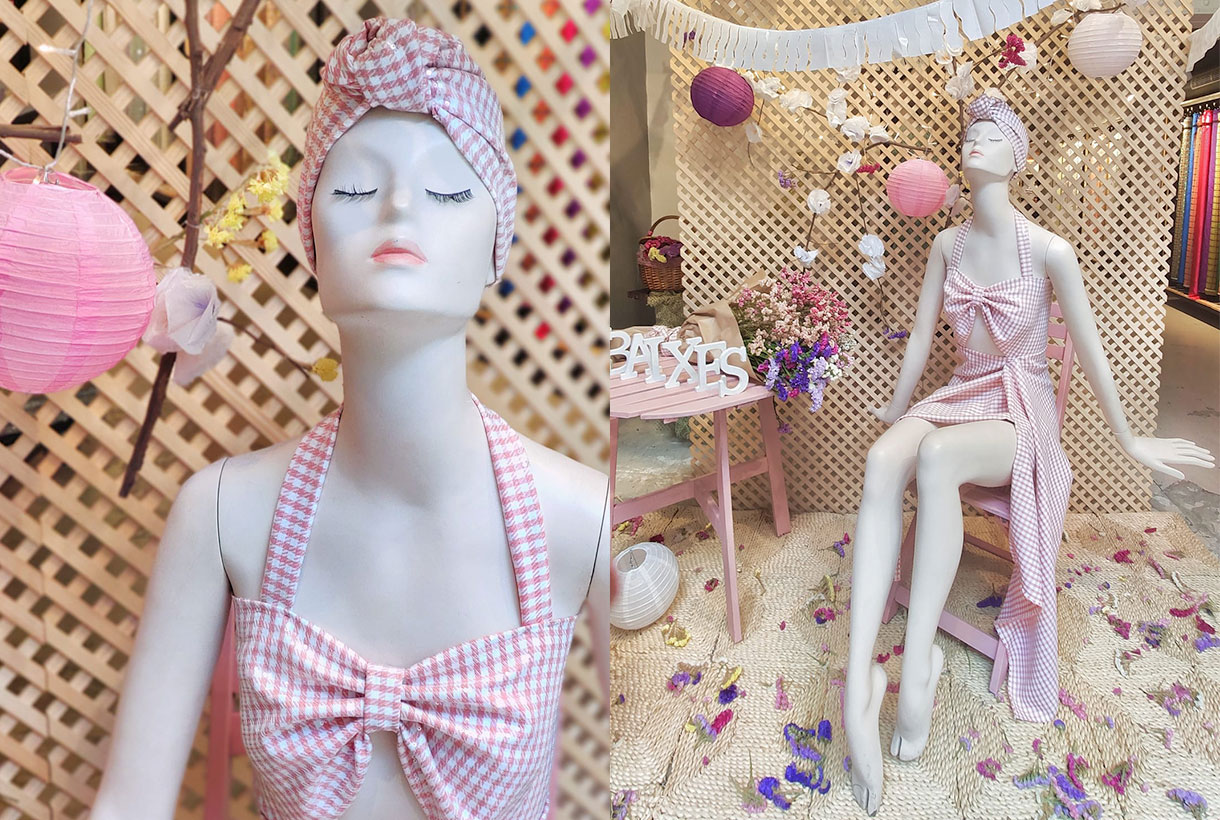
July 2021. Time to escape
The summer month par excellence is a tribute to festivals, fun and feeling carefree, maintaining that hedonistic attitude to take life a little more lightly, enjoying all the earthly pleasures. July has a fresh, youthful and daring character, as evidenced by the outfit of our mannequin in pink gingham fabric. Let the party begin!
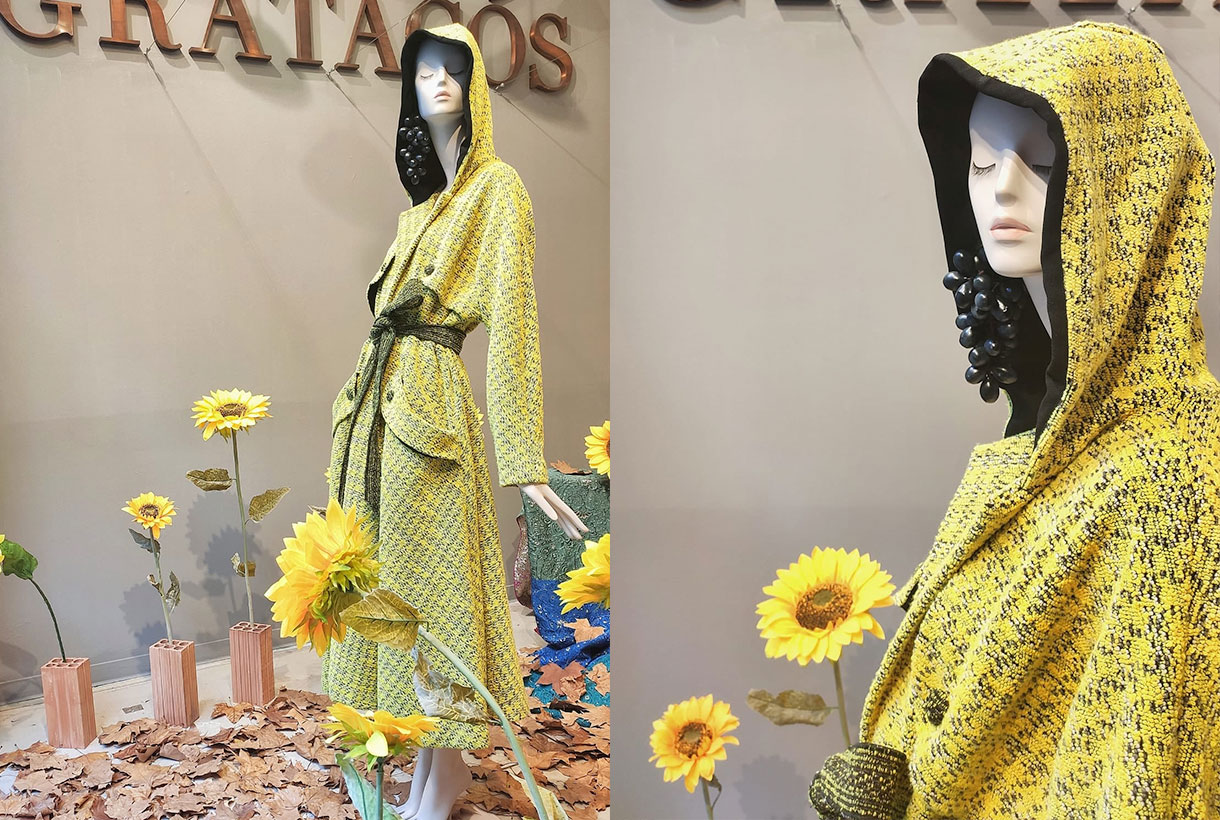
September 2021. Start over
September is the official month of beginnings. The new season, the change of season, the return to routines … we illustrate the busiest month on the calender by paying tribute to comfort through a bathrobe-type trench coat made of pistachio green tweed, all very daring dyed yarn, with a wool touch and thick weight. A carpet of dry leaves marks the beginning of autumn, which in Barcelona is light and soft.
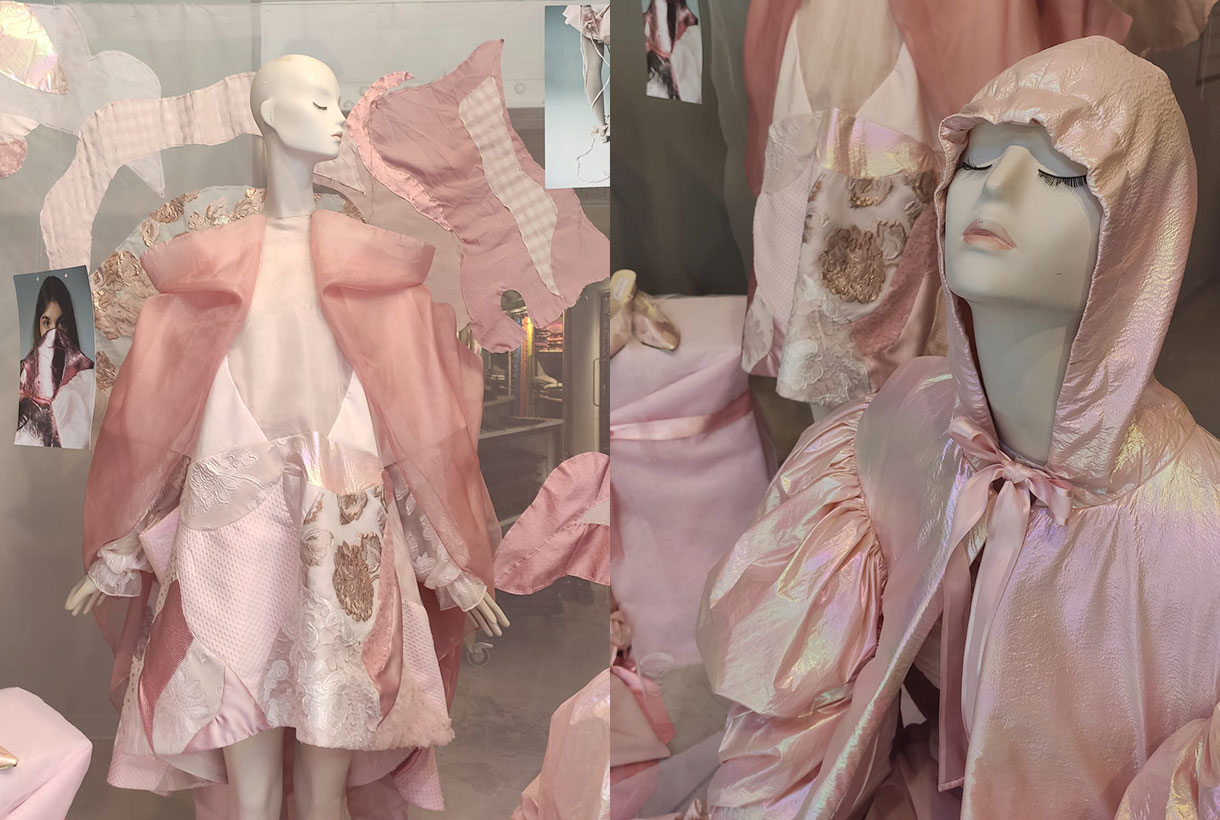
October 2021. The Pink month.
It is called the pink month because it is recognized worldwide with this feminine color to raise awareness in men and women about breast cancer and promote self-examination and check-ups to be able to detect it early. Our tribute to the most delicate, subtle and romantic month was made by Rosa Cano, a student at ESDI, Escuela Superior de Diseño with these contrasting fabric models that play with the entire range of pastels and nudes. One of the most spectacular showcases of the year!
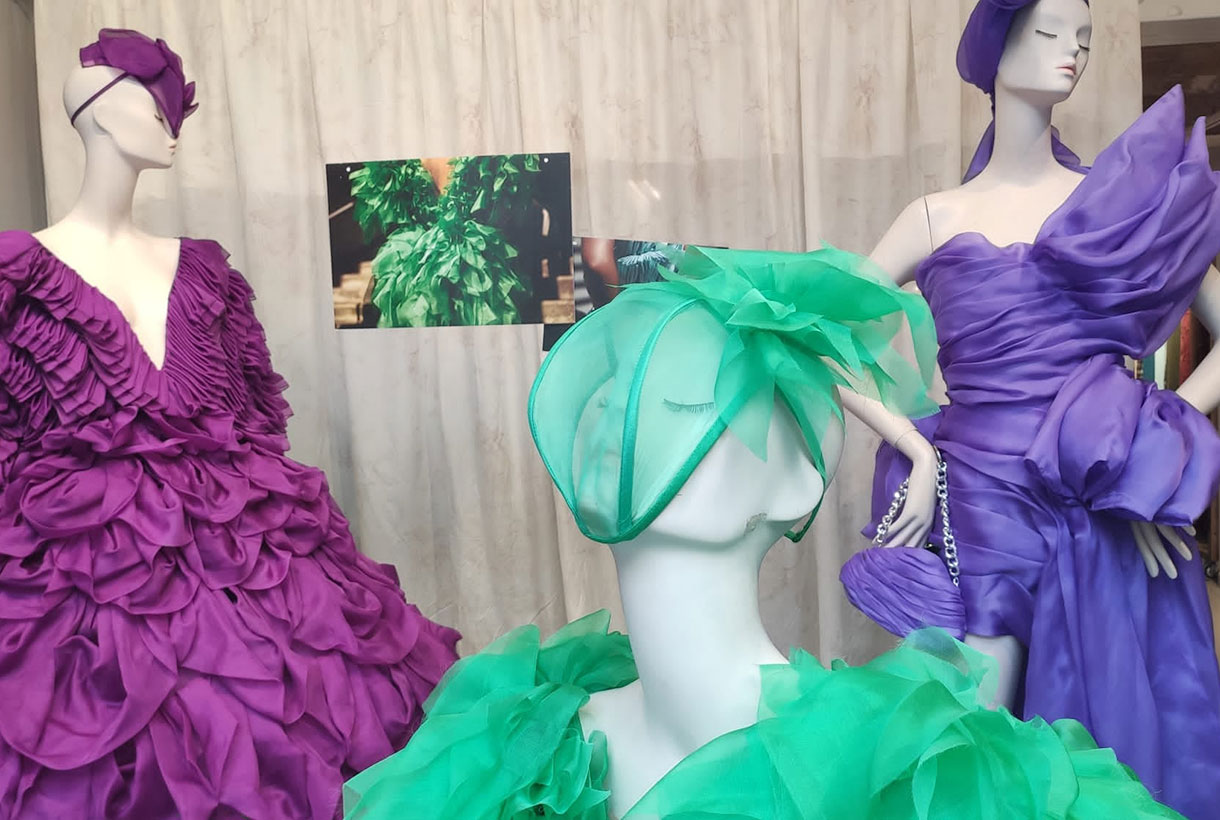
November 2021. Let the party commence!
The proximity of the Christmas holidays makes November a month of preparations. A headstart on shopping, lights that turn on and the search for the most surprising outfits to fill the holidays with magic. The designer Claudia from the Institut Català de la Moda (ICM) presents three models from the ‘Ritmos’ collection. Voluminous dresses with meters and meters of suggestive organza for celebrations full of fantasy.
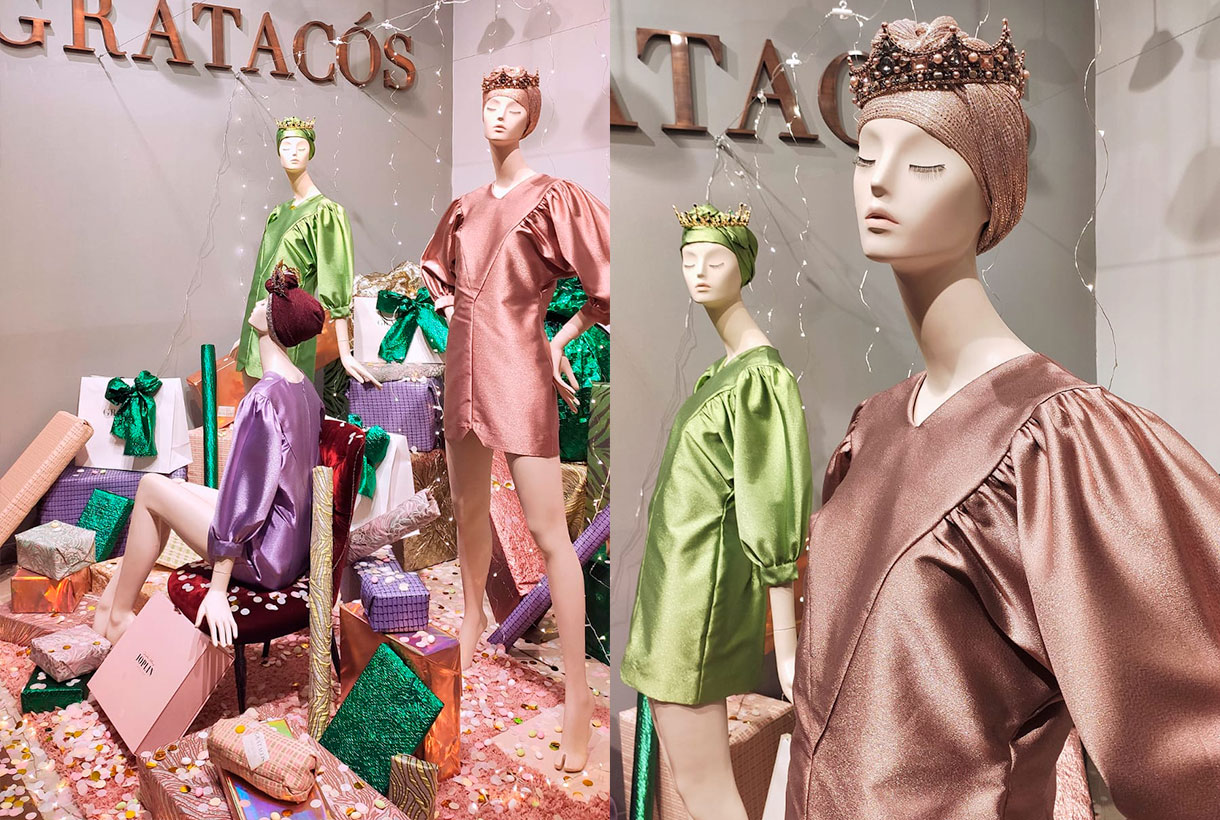
December 2021. The three queens
We ended the year again in collaboration with Joplin Atelier and its proposal in a feminine key. Our “Three Magical Queens” are a tribute to the strength of women, capable of dealing with all areas of their lives with determination and mastery. They are the philosopher’s stone of many families and especially during the hustle and bustle of the Christmas holidays. The mannequins share a turban and crown to match their short dresses with a closed neck and puffed sleeves made from acetate satin with lamé. Under their feet they protect all the gifts, the symbol of the act of sharing (and receiving).
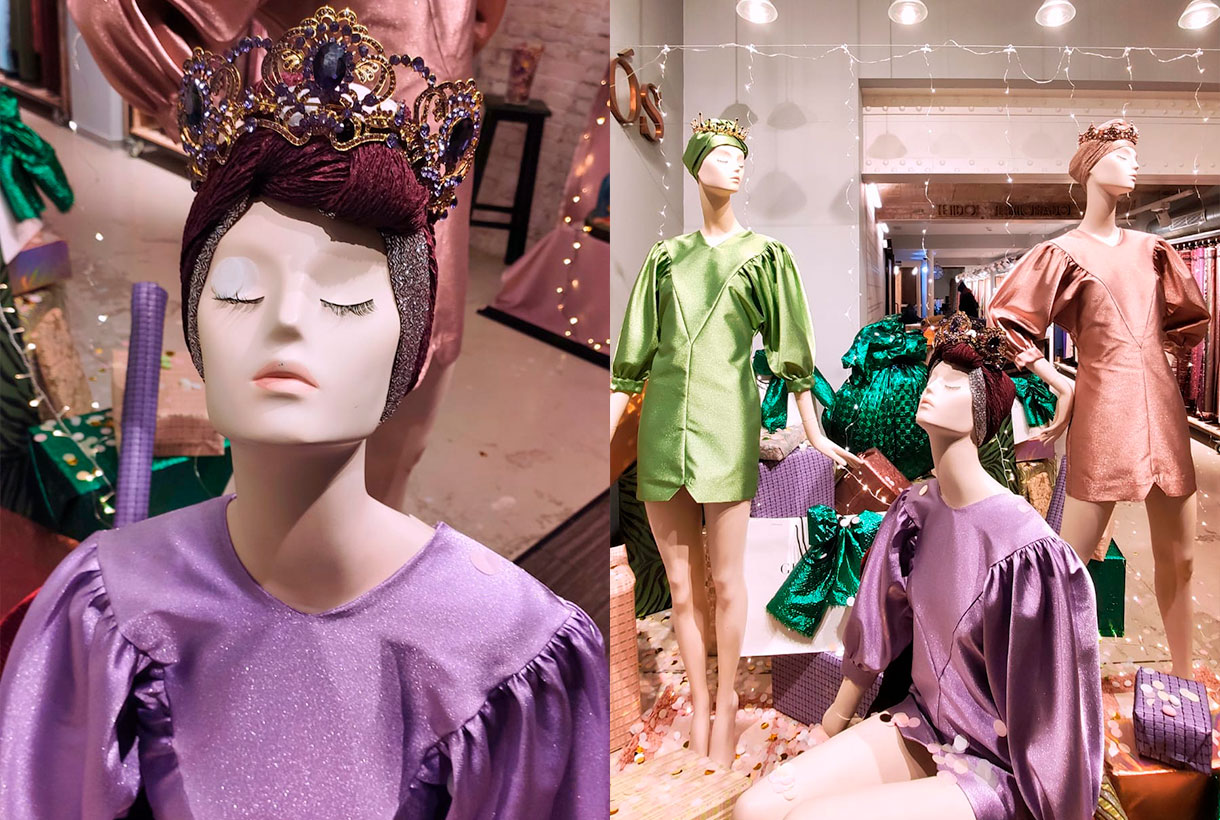
Viernes 10 diciembre 2021
 December is the month of rituals and traditions marked especially by Christmas and the closeness to our loved ones. For designers, there is one thing that is awaited for with enthusiasm: finally knowing the colour that will mark the following year and that will be announced at this time, Pantone. The world authority of colour has once again communicated the tonality that will mark the year 2022 in areas as multidisciplinary as design, art, advertising or fashion. It’s called Very Peri and it’s a novel shade based on lilac that, they say, “maintains a daring presence and stimulates ingenuity and personal creativity.” Do you have a better cover letter?
December is the month of rituals and traditions marked especially by Christmas and the closeness to our loved ones. For designers, there is one thing that is awaited for with enthusiasm: finally knowing the colour that will mark the following year and that will be announced at this time, Pantone. The world authority of colour has once again communicated the tonality that will mark the year 2022 in areas as multidisciplinary as design, art, advertising or fashion. It’s called Very Peri and it’s a novel shade based on lilac that, they say, “maintains a daring presence and stimulates ingenuity and personal creativity.” Do you have a better cover letter?
As you already know, the annual choice of a colour is not done randomly or is the result of whim because it involves a deep study and analysis of trends by the trendhunters of the Pantone Colour Institute. With an in-depth study of the impact that various exhibitions, works of art, films that will be released next year, the most popular destinations, new technologies and all together, the global mood, they have a meticulous discussion and dimension the impression that every aspect will have. Before closing the year, experts have revealed what 2022 holds for us.
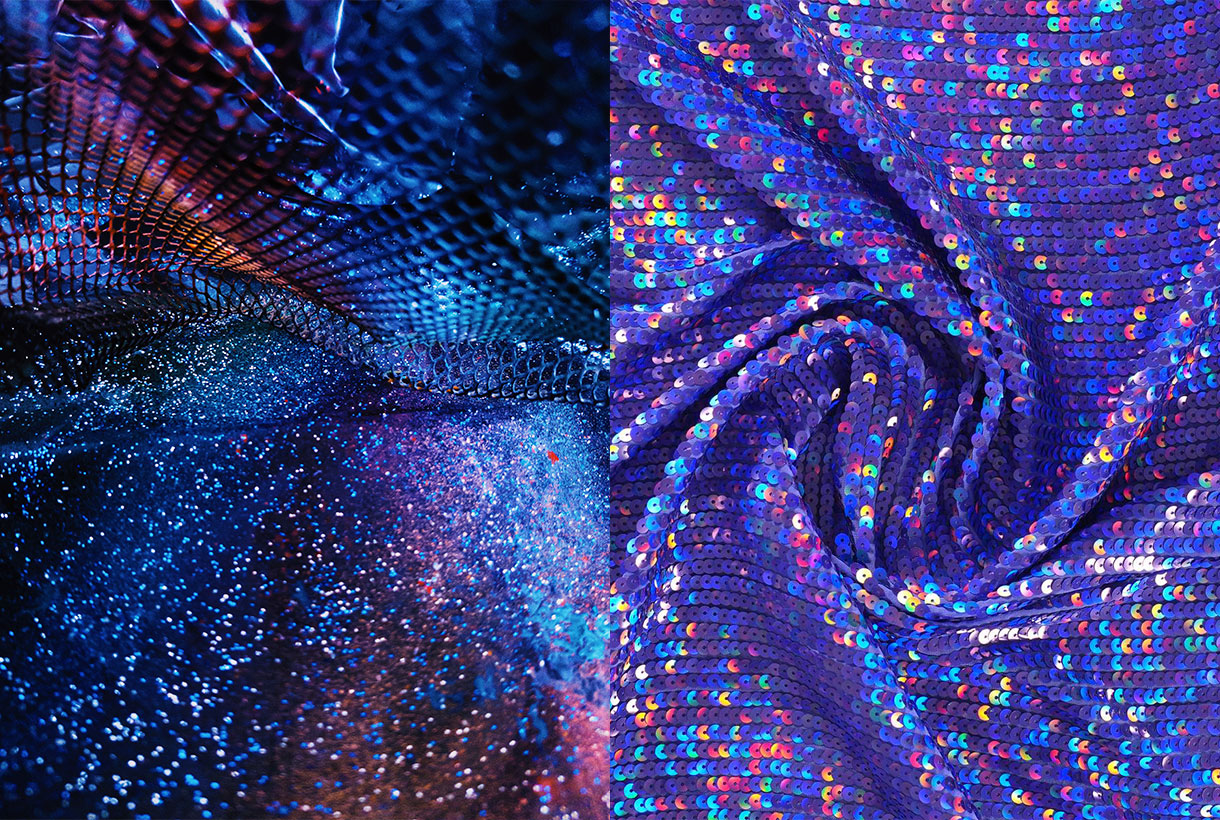
“Creating a new colour for the first time in the history of our colour program is a reflection of a process of innovation and transformation at a global level,” said Laurie Pressman, vice president of the Pantone Institute of Colour.
“The Pantone Colour of the Year is a reflection of what is happening in our world culture and expresses the answer to what people are looking for in this colour,” says Laurie Pressman, vice president of the Pantone Colour Institute. ” He adds: “The creation of a new colour for the first time in the history of our educational colour program Pantone Colour of the Year is a reflection of a process of innovation and transformation on a global level. As society recognizes colours as a fundamental form of communication and as a way of expressing, capturing, connecting and influencing ideas and emotions, this new and complex blue hue fused with purplish red highlights the range of possibilities that are presented to us. “
In this case, by encompassing the qualities of blues and, at the same time, having a purplish-red hue, PANTONE 17-3938 Very Peri displays a cheerful and lively attitude, as well as a dynamic presence that stimulates the courage to create and an imaginative expression.
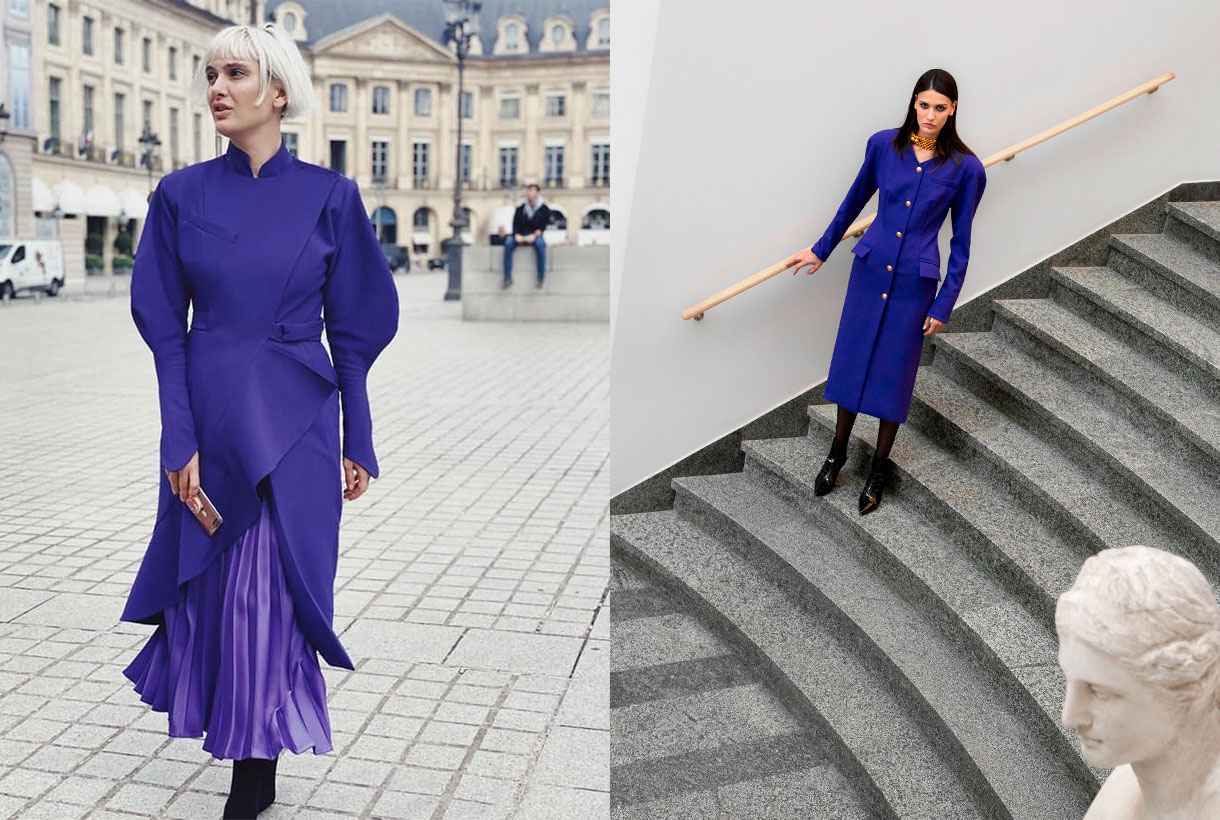
Deciphering the enigmatic tonality of 2022
Very Peri represents the perfect fusion between blue and red. A bridge between two primary tones that are interrelated giving way to this enigmatic tone. According to Pantone, Very Peri is the result of carefree confidence and daring curiosity that encourages our creative, inquisitive and inclusive spirit. The authority of colour considers that this tonality helps to embrace this altered landscape of possibilities and opens a new vision so that each one can rewrite their own life. Rekindling gratitude for some of the qualities blue represents complemented by a new perspective that resonates today, PANTONE 17-3938 Very Peri puts the future ahead in a new light.
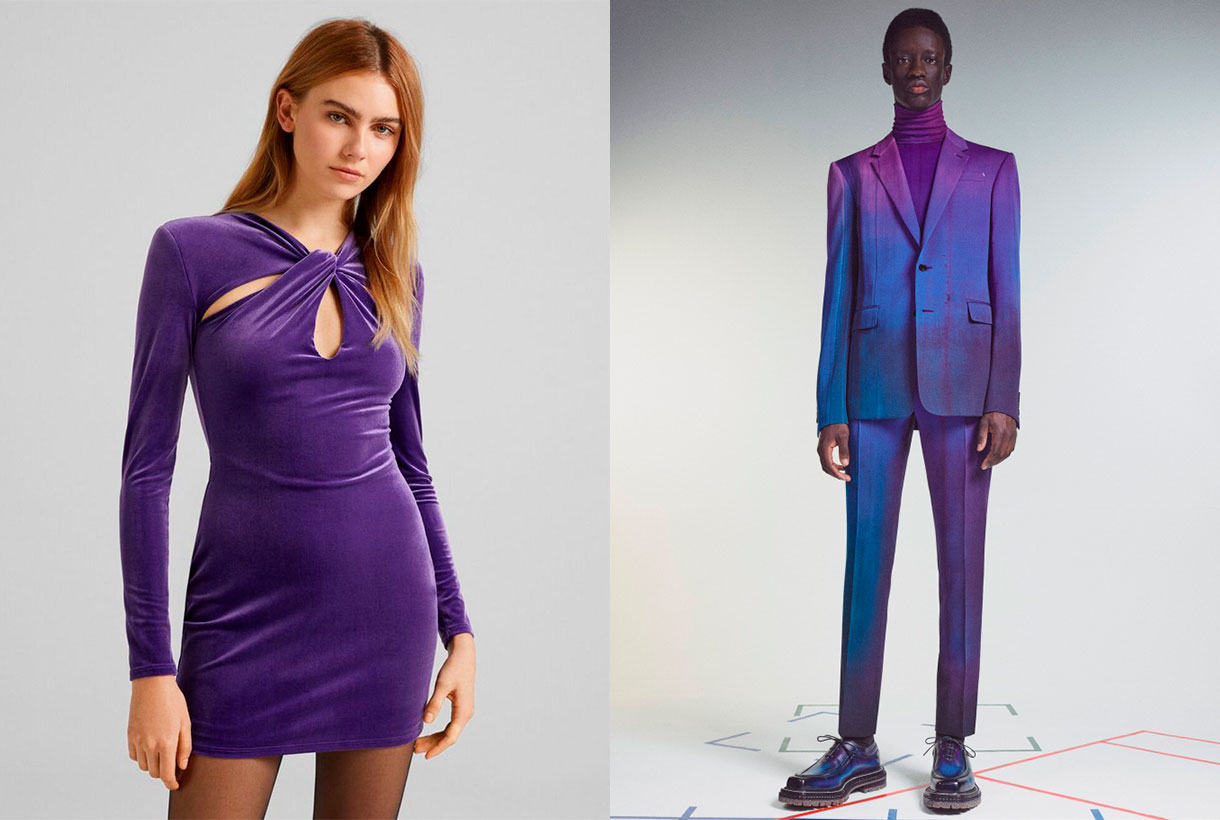
Very Peri displays a cheerful and lively demeanor, as well as a dynamic presence that stir up courage to create and an imaginative expression.
In times of transformation, Very Peri is a symbol of the spirit of our current global age and the transition we are experiencing today. As the period of isolation, marked by the global pandemic, is emerging, notions and standards are changing and people’s physical and digital lives have merged in new ways creating hybrids. This tonality also symbolizes the rise of digital design, which helps to stretch the limits of reality, opening the door to a dynamic virtual world where you can explore and create new colour possibilities. With trends in gaming, the growing popularity of the metaverse, and the growing arts community in the digital space, PANTONE 17-3938 Very Peri illustrates the fusion of modern life in correspondence with colour trends in the digital world and how together they are manifest in the physical world and vice versa.
This colour illustrates the fusion of modern life in correspondence with colour trends in the digital world and how together they manifest in the physical world and vice versa.
 How do we apply Very Peri in the world of fashion?
How do we apply Very Peri in the world of fashion?
We said it at the beginning. Very Peri is the colour that seeks to convey courage, boost reinvention and stimulate creativity by displaying carefree confidence and infinite curiosity. It is a fresh, versatile and genderless shade that adapts to a wide variety of fabrics, textures and reliefs, provides a touch of colour and does not go unnoticed at all. On the catwalks, this hue has starred in monochrome looks in the shows of the new summer collections by Isabel Marant, Balenciaga, Thom Browne or Ermanno Scervino. Other firms such as Lanvin or Marine Serre have chosen to combine this violet tone with arty prints and neutral tones.
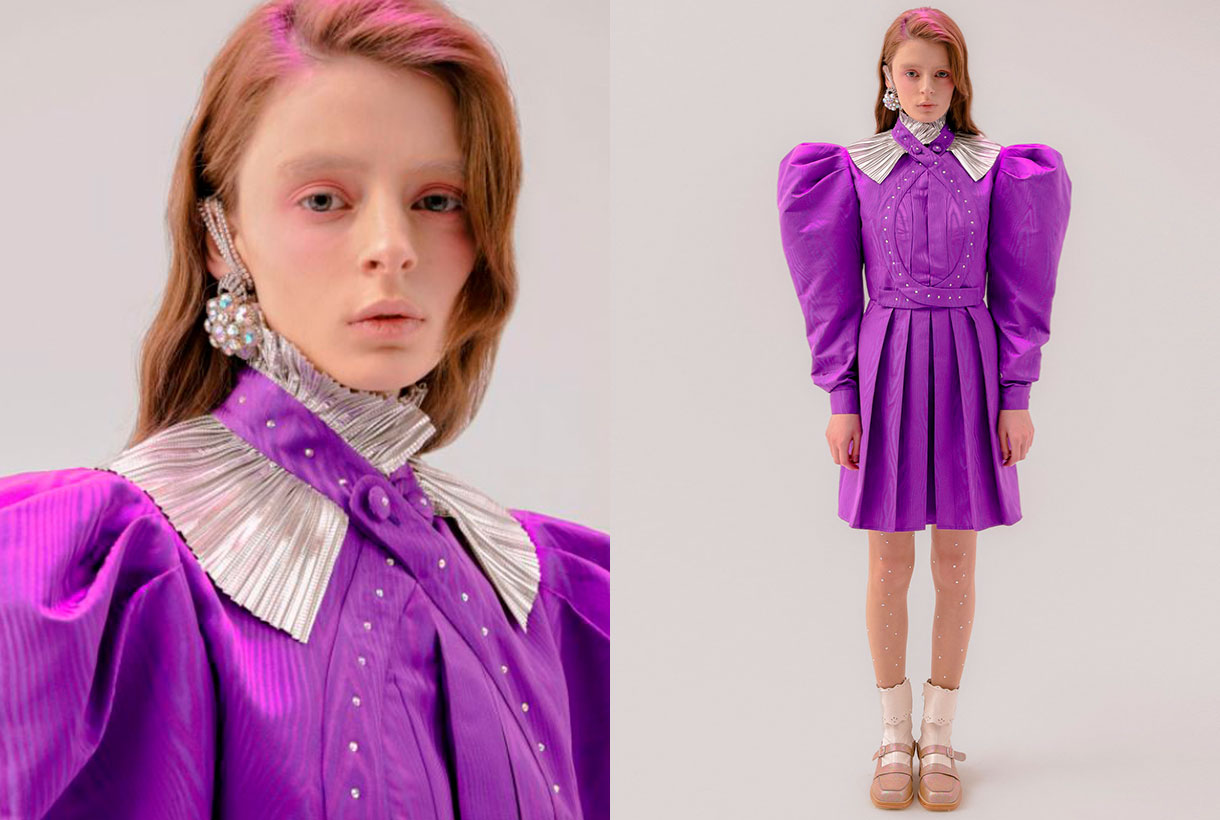
In Gratacós we have several seasonal fabrics where the Very Peri colour is present. You will find it in plain items and through prints or in its more sophisticated version with reliefs, iridescence and rhinestones. Take the opportunity to rediscover the collection that we have on offer in our online store.
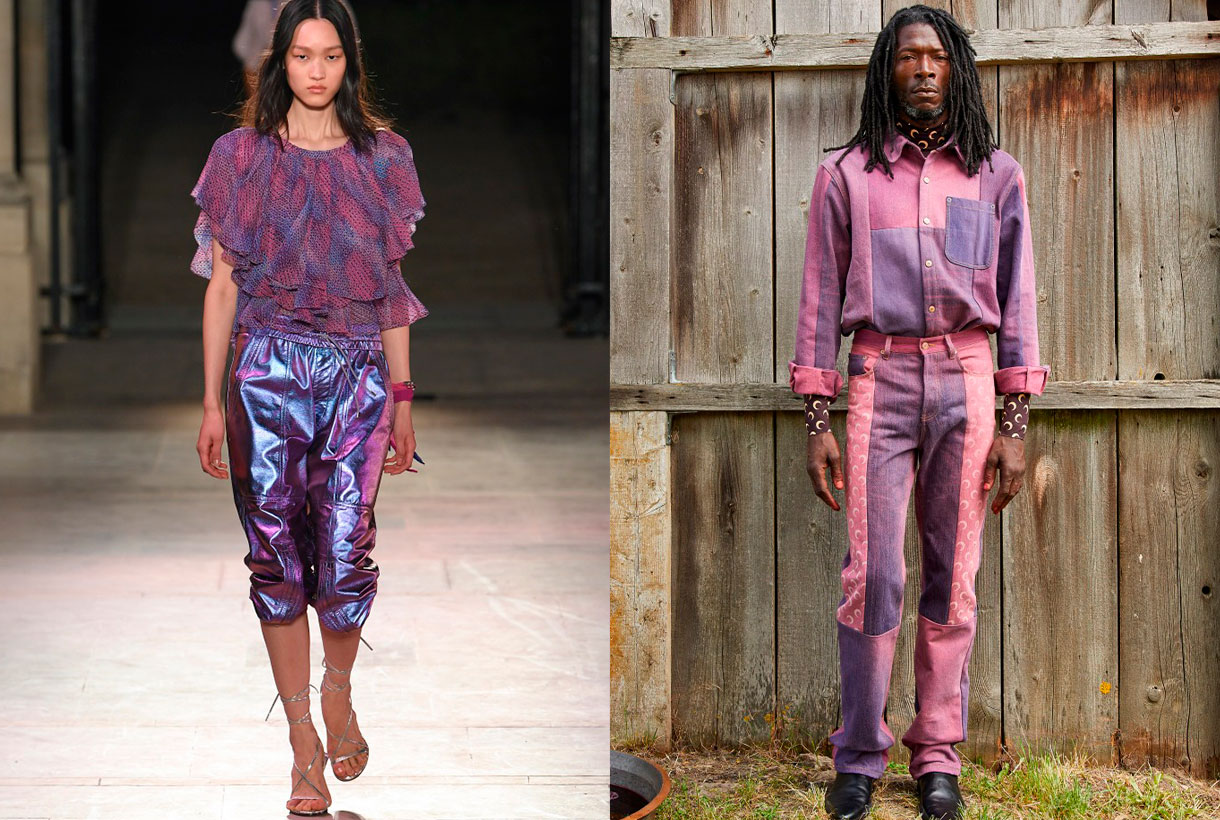

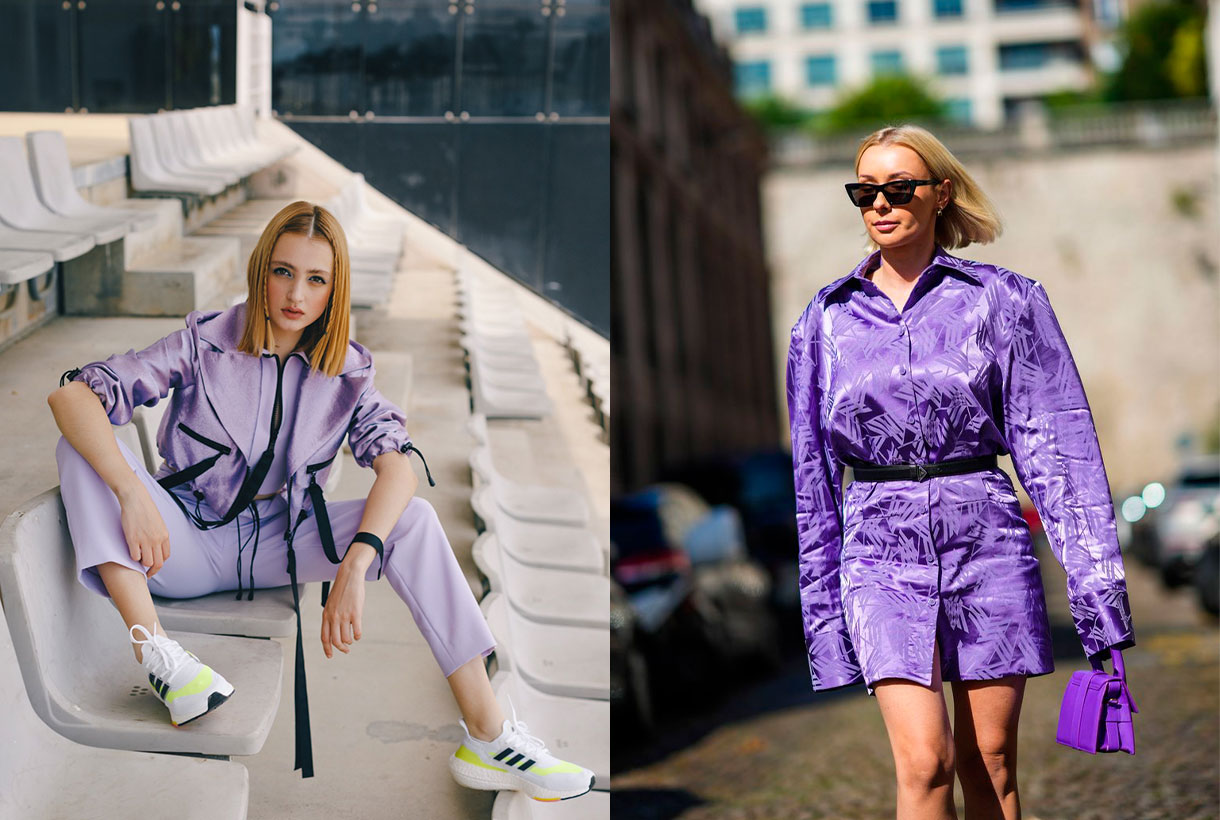
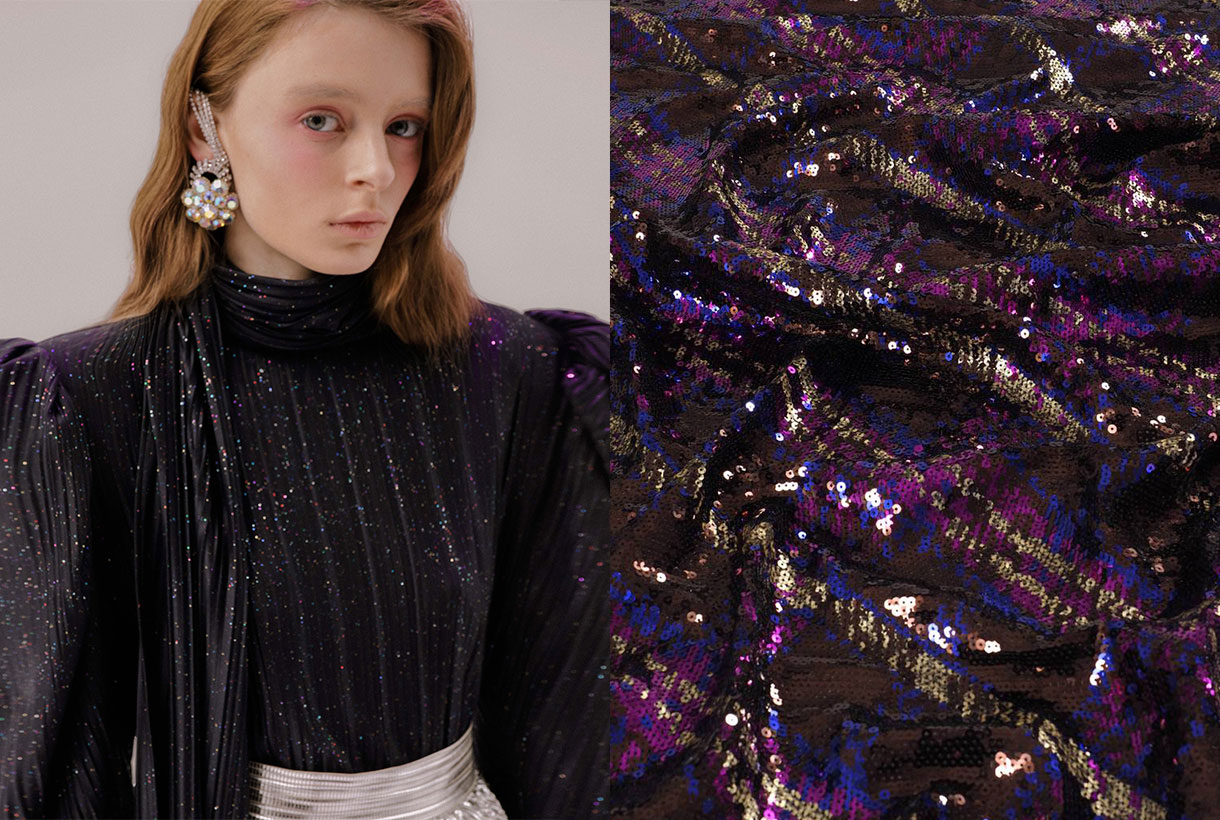
Sorry, this entry is only available in European Spanish.
Miércoles 03 noviembre 2021
 From Gratacós we closely follow the Spanish catwalks because we like to appreciate the creativity of designers in the form of impressive seasonal garments and how, sometimes, one of our fabrics sneaks into the looks of their magnificent collections. After the Mercedes-Benz Fashion Week Madrid in September, the last appointment with fashion was held by 080 Barcelona Fashion last month, in a new exhibition of fashion and power.
From Gratacós we closely follow the Spanish catwalks because we like to appreciate the creativity of designers in the form of impressive seasonal garments and how, sometimes, one of our fabrics sneaks into the looks of their magnificent collections. After the Mercedes-Benz Fashion Week Madrid in September, the last appointment with fashion was held by 080 Barcelona Fashion last month, in a new exhibition of fashion and power.

The Catalan catwalk once again opted for the digital format, presenting for the third time in a row, fashion short films previously recorded and edited by 22 designers who participated in the last edition. This time, the film set of the audiovisual pieces took place in a space that broke with the modernist legacy of recent editions: Xavier Corberó’s residential and architectural complex located in Esplugues de Llobregat. A wonderful sculptural work of concrete and glass of a rationalist character with dreamlike buildings that recall the metaphysical painting of Giorgio de Chirico or the mathematical art of Escher.
Next, we explain in detail some of the collections that surprised us the most with designers who maintain creative discourses linked to uniqueness, craftsmanship, sustainability or proximity.

Avellaneda
Avellaneda turned the XC space of the Xavier Corberó architectural complex into a glamorous party displaying beauty, youth and good taste in clothing. In the new collection, the Barcelona designer Juan Avellaneda was inspired by the city and the individuals who inhabit it and share secrets, passions, ephemeral romances, eternal promises and moments of fun. This urban jungle consisted of a sophisticated collection of cocktail looks with traces of safari style: a revision of the zebra animal print , sequined jackets and baggy pants in earth tones. These innovative pieces coexisted with their signature flagships: tuxedos, dresses with sensual openings, silks, ruffles and sequins reign in clothes with daring patterns in a unique proposal that mixes exoticism with its usual elegance. The neutral bases, the pairing of black and white, red and fuchsia gave colour to this festive collection that plays with the classic codes of good dress.

Eiko Ai
Eiko Ai brings a new value in women’s fashion by combining concepts such as sophistication and sensuality in the clothes that she creates in a casual style for everything to wear. Always with that point of magic that invites clients to dream through the designs. On this occasion, the firm led by Glò Lladó has presented in 080, a collection that represents a fantastic trip to the mountains that allows us to discover the nymphs of the forest. These creatures of evocative power, inspiring myth and legend, have been dressed in two-piece combinations with bras – a hallmark of Eiko Ai-, oversized bomber jackets, trench coats with sparkly fabrics and sheer dresses with surprising cuts that insinuate without showing excessively. All this adorned with sequins, velvets, satins, lace and iridescent materials that create sensual transparencies on the models’ bodies. The silhouettes have a minimalist point inspired by the 90s and the lingerie looks blend with the festive in this exciting proposal tinged with deep green, silver and lavender that attracts at first glance.

Moisés Nieto
The designer from Úbeda (Jaén) made his debut on the Catalan catwalk displaying his credentials: contemporary design combined with the passion for craftsmanship and the trade that characterizes his elegant style from restraint. In the new collection for next season, Moisés Nieto takes a trip back in time to reconnect with his childhood in Andalusia. From the summers of the 90s, the designer chooses elements rescued from memory that serve to shape a proposal that speaks of everyday life: the crochet of the doilies, the nets of the curtains, the lace or the plants of the patio are a representation of the memories that take us to the eternal hot summers of the south. The sustainable brand shapes its particular vision in roomy midi dresses and pleated silk skirts. Light garments made with organic cotton or silk fabrics and mixed with artisan techniques such as knitting, crochet and macramé. It is worth noting the textures displayed that play with different weights and structures to create volume in women’s garments that add unexpected details. As in previous collections, the designer approaches craftsmanship and values sustainability, two aspects that have become the most visible hallmarks of the Spanish firm.

Y_Como
Finally, highlight the new work of Cristina and Yolanda Pérez from Yolancris in the new brand, Y_Como, which once again surprises with a new collection based on research and the creative process. The summer proposal presented at 080 Barcelona Fashion is inspired by the painting ‘The Garden of Delights’ by Bosco. Specifically in the panel that refers to Paradiso with a free interpretation, but full of visual references that refer to the work focused on creation. In the first scene of the fashion film , set in the architectural garden of Xavier Corberó, the models that embody the characters in the painting appear: there is the owl that represents the evil that contemplates falling into temptation, the figures of Adam and Eve , and followed by exotic animals that are represented by models of baroque aesthetics that show spectacular golden robes with floral embroidery. Also featured are other black sexy dresses, garments with lots of floral and patchwork denim, fabric star creative signature ready-to-wear bulky clothes that give a rebellious streak this sensuous YComo proposal.





Miércoles 20 octubre 2021
 Is black a colour? There is still debate in which it represents the darkest shade, the result of the absence or complete absorption of visible light. Black is a colour without tone, a neutral base like white – its opposite – and gray. It lacks tonality and luminosity because it absorbs light without reflecting any of its component rays. Historically, the colour black has been used to represent darkness, mourning, solemnity, and authority, but it has also been linked to elegance, the unconscious, and individualism. Especially in the last century, the most revolutionary of all. Black symbolizes chaos. Now, it returns to the fore as the primary colour and absorbs the rest of the opponents, but first let’s investigate a little in the imaginary of a colour without colour.
Is black a colour? There is still debate in which it represents the darkest shade, the result of the absence or complete absorption of visible light. Black is a colour without tone, a neutral base like white – its opposite – and gray. It lacks tonality and luminosity because it absorbs light without reflecting any of its component rays. Historically, the colour black has been used to represent darkness, mourning, solemnity, and authority, but it has also been linked to elegance, the unconscious, and individualism. Especially in the last century, the most revolutionary of all. Black symbolizes chaos. Now, it returns to the fore as the primary colour and absorbs the rest of the opponents, but first let’s investigate a little in the imaginary of a colour without colour.

From prehistoric origins: Art, the underworld and death.
Black was one of the first colours used in art. It was used by Paleolithic artists in cave paintings with drawings of bulls and other animals made with charcoal and later, pigments of more intense tones were made with manganese oxide or animal bones. In ancient times, the Egyptians gave positive associations to black: it was the colour that represented fertility (the soil flooding from the Nile was black). It also represented the god Anubis, guardian of the underworld, who took the form of a black jackal and offered protection against evil to the dead. For Classical Greece, black was also the colour of the “other world”, separated from the land of the living by the Acheron river, whose waters were black. The Greeks often used this colour in pottery with black figures set against other red figures. Interestingly, in the social hierarchy of ancient Rome, black was used by artisans. It wasn’t a deep, rich tone because the vegetable dyes they used to make black weren’t solid or long-lasting, so they often faded to grays or browns. Black was also the Roman colour of death and mourning. In the 2nd century BC, Roman magistrates began to wear a dark robe for funeral ceremonies. In Roman poetry, death was called the black hour.

From the darkness of the Middle Ages to the Renaissance
In the Middle Ages, black was associated with evil and darkness. It was the colour of magic, witchcraft, and the dark arts. In fact, the devil in medieval paintings was depicted in human form, but with black wings, skin, and hair. Europe also dressed in black during the bubonic plague episodes as a sign of mourning. In the fashion of the time, black did not have the prestige of red, the colour of nobility and was worn by Benedictine monks as a sign of humility and penance. Despite this, black could also symbolize power as the secret in the medieval world. The emblem of the Holy Roman Empire of Germany was a black eagle. Also the black knight in the poetry of the Middle Ages was an enigmatic figure, without identity.
In the Renaissance, the connotations of the colour black began to change. High-quality black dyes were introduced to the market, allowing garments of deep, rich black to be produced. It was at this time that magistrates and government officials dressed in their black robes, as a sign of the importance and seriousness of their positions. As only the nobility could wear bright colours like red or royal blue, the burgeoning middle class like bankers and merchants began to adapt black in their robes and dresses to distinguish themselves socially.

The colour of the Spanish court during the Golden Age
Black was a fashionable colour in the Spain of the Golden Age. It became the emblem colour of the Spanish Habsburgs, Carlos V and his son, Felipe II, who saw it as a symbol of power, dignity, and humility. and temperance. A world power such as Spain after the discovery of America, dictated the fashion and transferred the taste in the dress of the Spanish court to the rest of Europe. The black was austere and sober, but also rich in nuances and made one better appreciate the complexity of the fabrics used. The brighter and more solid it was, the more social status the person who wore it had.

In Baroque painting there was also a resurgence of the colour black in the treatment of light and shadow in the works of Caravaggio and Rembrant or in the paintings of Velázquez, and later Goya . Who does not remember his famous black paintings? Later, when the Netherlands became a new world power, they determined a new fashion: clothing and rigid ruffles were loosened, but the colours did not return because among the Dutch the Reformation had triumphed, and the colour of the protestants was also black.

Black in the contemporary era
In the 18th century, during the European Age of Enlightenment, black lost its popularity as a fashionable colour. Paris became the capital of fashion, and pastel blue, green, yellow and white became the colours of the nobility and upper classes. After the French Revolution, black re-established itself as the dominant colour. The Industrial Revolution is also characterized by black, largely fueled by coal and later by oil. Charles Dickens and other writers of the time described the dark streets and smoky skies of London, and they were vividly illustrated in the engravings of the French artist Gustave Doré . Black was also the colour of romantic literature. The tone of melancholy, romanticism and nostalgia for the past. Stormy castles, rainy nights, secret meetings at midnight … black had a fantastic component and was adopted by the poets of the time.
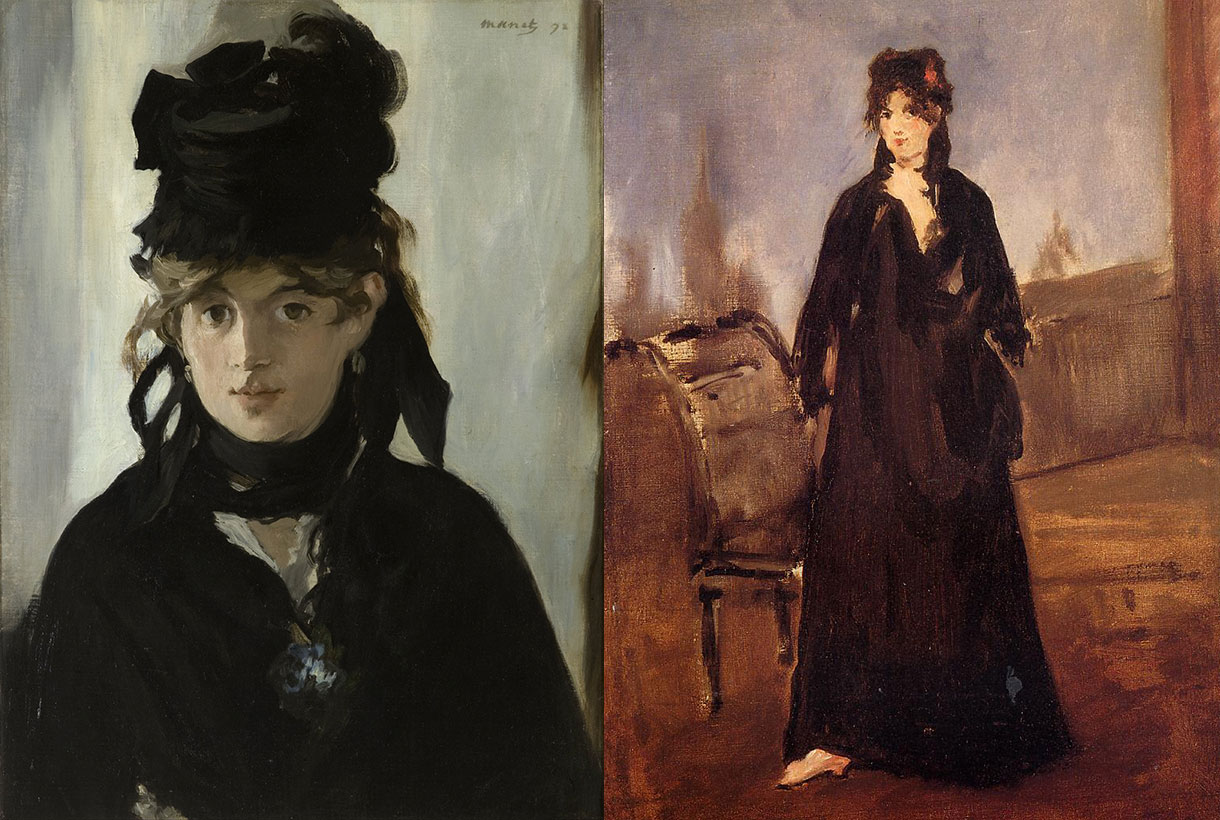
The black of impressionist artists
Impressionism did not recognize black as a colour. This pictorial trend, which began in France around 1870, was very popular and, even today, the viewer considers impressionist paintings as the culmination of pictorial beauty. Édouard Manet used the colour black for its strength and dramatic effect. Manet’s portrait of painter Berthe Morisot was a study in black that perfectly captured her spirit of independence. Black gave the painting power and immediacy. Henri Matisse quoted the French impressionist Pissarro as saying: “Manet is stronger than all of us: he made light with black.” Another famous painter: Pierre-Auguste Renoir used luminous blacks, especially in his portraits. When someone told him that black was not a colour, Renoir replied, “What makes you think that? Black is the king of colours ”. Vincent van Gogh used black lines to shape many of the objects in his paintings. In the 20th century, the colour black also experienced a new splendor. The Russian painter Kasimir Malevich , created the ‘Black Square’ in 1915 and it is considered the first purely abstract painting. For Henri Matisse , black was a prized colour. “When I didn’t know what colour to leave, I put black,” he said in 1945.
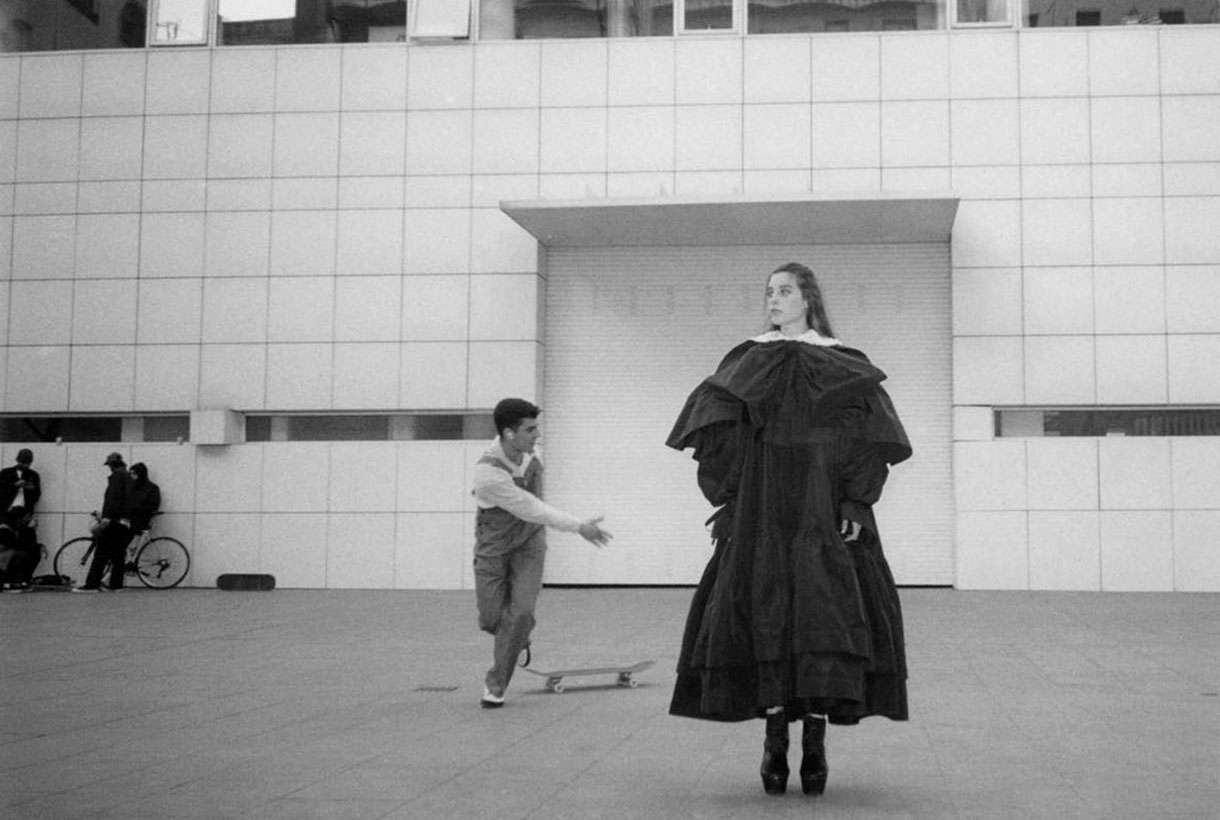
A symbol of individualism
Black clothing concentrates on the face, considered the center of individuality, the impression that a person produces. Not surprisingly, in the 1950s, black was used as a symbol of individuality and intellectual and social rebellion, the colour of those who did not accept established norms and values. The philosopher Jean-Paul Sartre always wore black. Singer Juliette Greco, who embodied existentialism in more popular attitudes, was famous for her black shaded eyes, black corduroy pants, and chin-length black turtleneck. Black also became popular as a differentiating colour among all groups that did not feel like an integral part of the mass and did not participate in the values of adaptation. Rebels without a cause invariably wore black leather jackets. Then came the reign of rock’n’roll , punk fashion, and the goth subculture with a kind of Victorian-inspired funeral fashion.
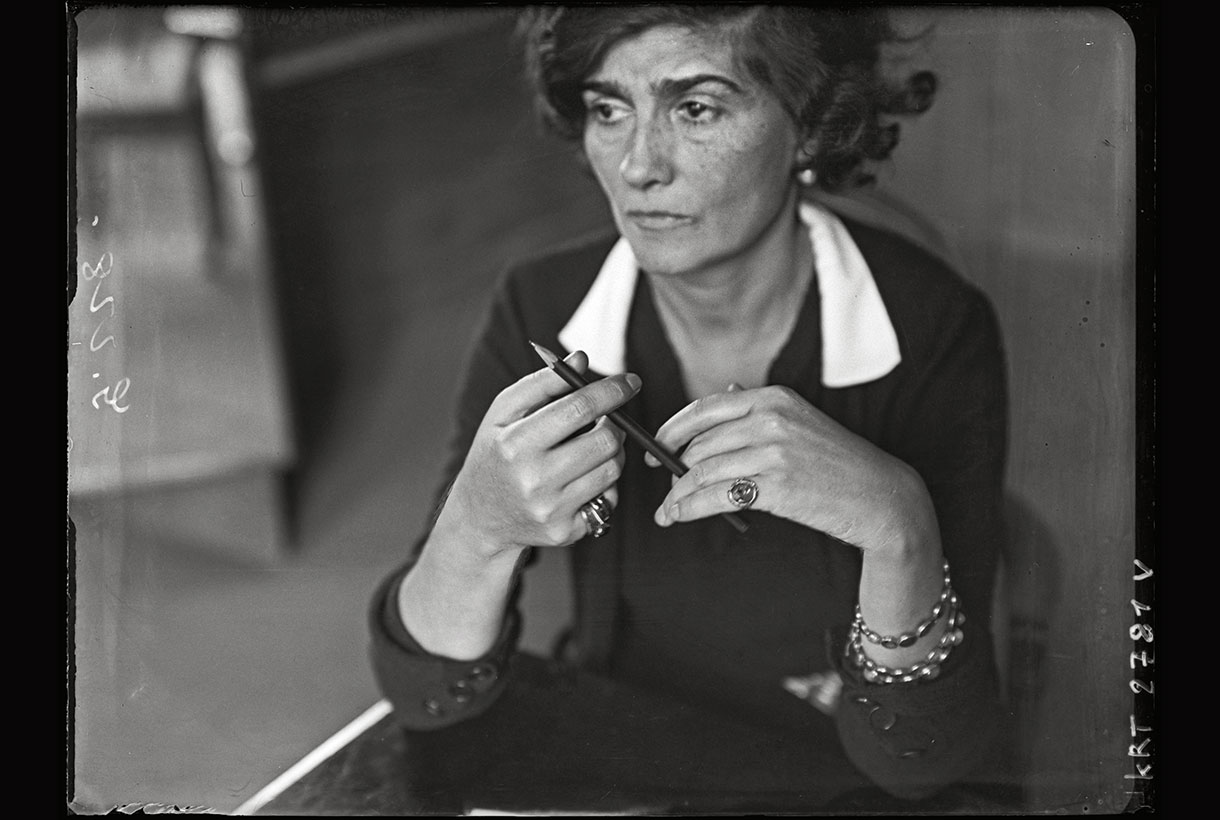
The favorite colour of 20th century fashion
Black is the colour of elegance because it means giving up austerity and the desire to attract attention. Who wears black, renounces even colour. For this reason, wearing black symbolizes being successful without risk. This is especially evident in the more conservative men’s fashion: the elegant suits, the tailcoat and the tux, are always black. Black was also considered the colour that the artists wore so that the character did not overshadow the work: whoever wears black does not need to be interesting with other colours, personality is enough.

One of the big names in fashion who revolutionized 20th century women’s fashion was Coco Chanel. The French designer simplified women’s wardrobe with her great masterpiece: the little black dress . The short dress that until today has been ideal for all formal occasions. “A woman needs three things: a black dress, a black sweater and, on her arm, the man she loves,” she said. Black was also the favorite colour of Cristóbal Balenciaga, who wanted to rescue the splendor that it had centuries ago and bring it back to fashion. It also had power in Christian Dior who stated that the colour black “could be worn at any time, at any age and for any occasion.” For his part, the designer Gianni Versace considered that black: “It is the quintessence of simplicity and elegance”, and the French designer Yves Saint Laurent said: “black is the link that unites art and fashion”. In all the history between cinema and fashion, one of the most famous black dresses of the last century was designed by Hubert de Givenchy and worn by Audrey Hepburn in the 1961 film ‘Breakfast at Tiffany’s’.

Designers also wear black
We have seen it. Black has captivated the fashion industry with its understated elegance and chromatic harmony in which fabrics and textures also play a fundamental role. In fact, many of the industry assistants who sat in the front row called them black crows because of the clothing they used to always wear. Beyond a trend of the moment to reclaim its throne in the winter of 2021 with monochromatic looks, wearing black from head to toe has always been a wise option that does not have to be boring or monotonous. The catwalks have once again spoken for themselves with proposals that give this timeless “uniform” a twist . Alberta Ferretti, Fendi, Isabel Marant, Versace, Chanel, Gucci or Dolce & Gabbana review the seasonal looks that are full of rigorous black.

Beyond sophistication, mystery, elegance or individualism, this colour in turn has also been adapted by famous contemporary designers who have made it their preferred colour to display for the gallery. Of course, each one is true to its style. It is impossible not to imagine Carolina Herrera without her black knee-length skirt; to Tom Ford without his perfect black suit or Karl Lagerfeld without his iconic black glasses . In its more casual versions, for example, Alexander Wang with a black T-shirt and jeans or Yohji Yamamoto who made black an emblem of Japanese design stand out. “Black is modest and arrogant at the same time. Black is lazy and easy, but also mysterious”. Of the colour without colour par excellence, he also immortalized a phrase to The New York Times newspaper: “I don’t mess with you, so don’t bother me.” And he applies his mantra to the last consequences both in his designs and when dressing himself. Consistency, first and foremost.


Sorry, this entry is only available in European Spanish.
Martes 21 septiembre 2021
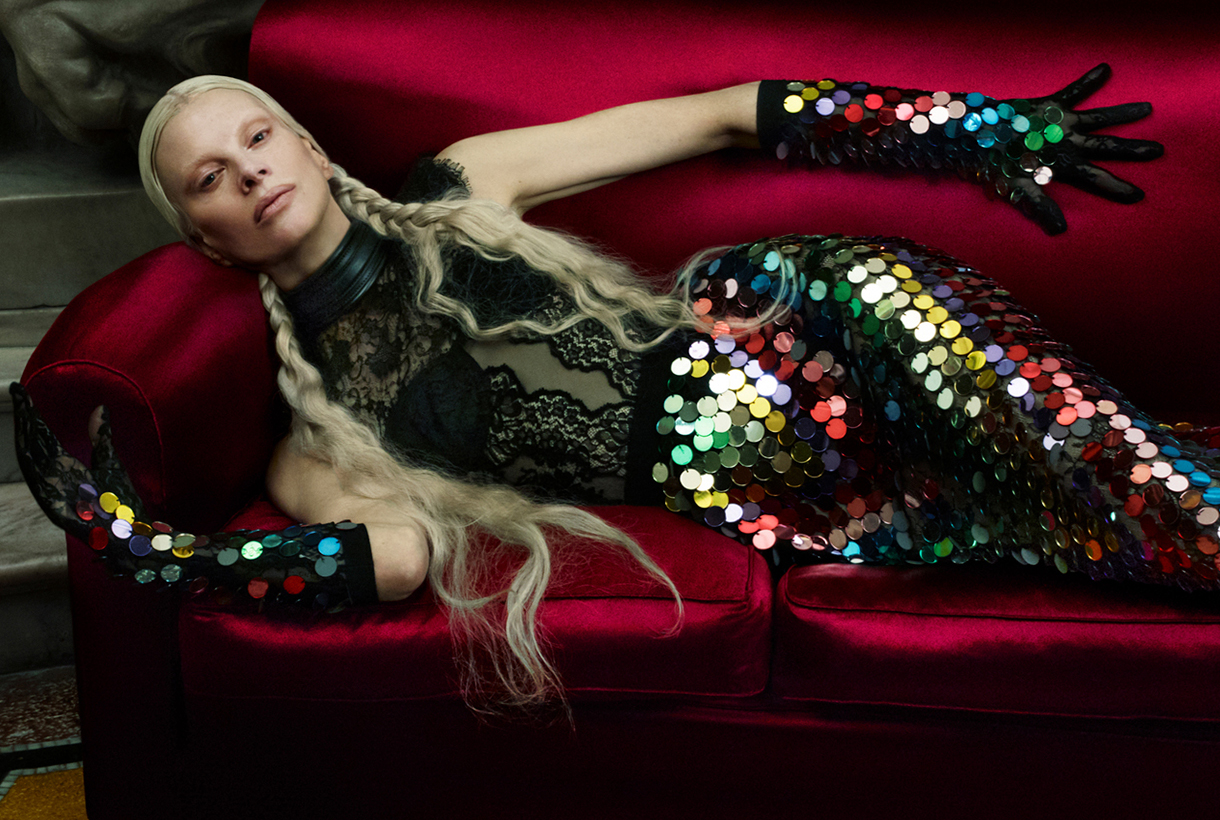 Little by little, it seems that we return to a certain normality. And an indicator of this is our physical participation in Première Vision Paris. This fair that takes place twice a year is one of the most specialized and influential in the world for manufacturers of fabrics. Exhibitors present all the new collections coming one year ahead. This year, Gratacós is present again to kick off one of our most special proposals: Autumn- Winter 2022/2023. We say that it is “special” because the pandemic is representing a year of great challenges for the company to maintain creativity, production and sales , without overlooking innovation and sustainability that characterizes our business.
Little by little, it seems that we return to a certain normality. And an indicator of this is our physical participation in Première Vision Paris. This fair that takes place twice a year is one of the most specialized and influential in the world for manufacturers of fabrics. Exhibitors present all the new collections coming one year ahead. This year, Gratacós is present again to kick off one of our most special proposals: Autumn- Winter 2022/2023. We say that it is “special” because the pandemic is representing a year of great challenges for the company to maintain creativity, production and sales , without overlooking innovation and sustainability that characterizes our business.

Broadly speaking, the new collection is a solid and choral proposal, which shows our desire to work and continue advancing through the generation of ideas, the creation of creative products and the investigation of new trends. A proposal based on the strength of colour, print and designs with great visual presence. We play with contrasting tones, unique prints and add an extra touch of fantasy because we believe that it is more necessary than ever. To do this, we mix flowers of different shapes and styles with geometric motifs , handicrafts, surprising textures, simplified neo Pucci motifs and neo William Morris with spacious backgrounds. All this to create a surprising game of harmonies, colour, light and tone that we believe will leave no-one indifferent.

The hug as the backbone
“We feel like going out and showing our joy, energy and positivity,” assures Rosa Pujol, creative director of Gratacós. Under this first premise, the Fall- Winter 22/23 collection has been structured, even more than usual on quality, fantasy and luxury. Show to surprise others and to surprise ourselves, is a maximum requirement now in capital letters.
And in this desire to show the fanciful side of fashion, the mother concept that underpins the entire proposal for next winter intervenes: the hug. The symbol of the union of affection and of brotherhood among people, most evident in unstable times like we are experiencing. To hug is to embrace with arms, reach out, understand, restrain, and even include. The creeper plants also hug the logs and facades of houses. And we liked that concept that unites and creates a feeling of sympathy. Aesthetic and visual. In fact, it is a collection designed to embrace multiple markets and different occasions through versatile and surprising items.
“We feel like going out and showing our joy, energy and positivity”.
Rosa Pujol,Gratacós creative director

Embrace materials
The Autumn- Winter 2022/2023 collection embraces craftsmanship. The thick yarns, the obvious braiding and the hand-made finishes. It is also a season where texture communicates by itself through complex folds, 3D effects, opaque transparencies that hint without showing, and precious embossing that surprise by their lines and shapes.
This season, the creative team also aims to stimulate new sensibilities by bringing together two fabrics that a priori are not compatible with each other to create daring aesthetics in the same outfit. It is about daring through complementary items that together create compatible chromatic harmonies. Another characteristic of the season is the commitment to the brightness that the night jump gives to establish itself during the day through surprising fabrics that seek a subtle and fantasy point of light that is 100% wearable. Simple, but sophisticated.

Embrace colour
Colour, more than matter, is light and is developed conscientiously this season to achieve very attractive results. A luminosity that makes us look better on the street. The collection works from the primary tones, through graphic prints , to the palette of metallics such as gold (solar energy) and silver (lunar energy) , mixed together.
As usual, in Première Vision Paris, three colour ranges will be presented. The first corresponds to a luminous band governed especially by radiant yellows and warm browns. The second card is the middle card with vibrant tones that go from oranges to blues and greens, to finish with fuchsias. Finally, the last letter corresponds to the neutrals and the duller tones, considered more masculine. A very interesting range that offers a great possibility of combinations as it is versatile and timeless.

Embrace nature
The Autumn- Winter 2022-2023 collection tries to strengthen the ties between man and closest nature through fabrics that refer to the beauty of plants. Garden inspiration returns through fabrics with plant motifs and country landscapes. As the writer and gardener, Jamaica Kincaid would say : “Gardens are spaces to connect us”. From Gratacós , the natural is also revalued with a commitment to the origin of the products and the raw material.
Finally, flowers also take over the collection in a particularly flowery winter. The flower is the protagonist of many of the fabrics with a variety of shapes, colors, sizes and arrangements.

Embrace geometry
Geometric motifs are very present in this coming season with fabrics that give a twist to the classics to attract the attention of the new generation of consumers: checks, polka dots, houndstooth or diamonds that are creatively combined to give new unexpected geometries.
In parallel, surprising combinations also arrive to generate all kinds of fantasies. The most extreme: combining two fabrics with graphic motifs that can be combined in the same outfit. Finally, although it is not an animal print season, in the next winter collection a fanciful item appears timidly such as a giraffe design Jacquard.


 Go back, start and use for the first time. These are the verbs that we wanted to put into motion after liquidating the last winter season and presenting the new collection for next spring at Première Vision Paris. In this limbo of past and future proposals, we can only talk about the present, in this case the spring-summer 2022 collection that we are eager to show in all its splendor through the catalogue, the online store and our physical space in Barcelona.
Go back, start and use for the first time. These are the verbs that we wanted to put into motion after liquidating the last winter season and presenting the new collection for next spring at Première Vision Paris. In this limbo of past and future proposals, we can only talk about the present, in this case the spring-summer 2022 collection that we are eager to show in all its splendor through the catalogue, the online store and our physical space in Barcelona.
 In the context of uncertainty that we have had since the start of the pandemic, we have seen people cling to solid values such as security and trust. For this reason, the textile proposals that we present this season will focus on articles that reassure, calm, do not disappoint and, above all, are durable. We are not interested in the frugal or the unstable. This season, colour is the catalyst that will bring consumers back to the world of design and trust in it. For this reason, colour is essential to shape fabrics and plays a key role in defining new proposals. From neutral tones, to their brightest reverses, through blues and greens to bright pinks and oranges.
In the context of uncertainty that we have had since the start of the pandemic, we have seen people cling to solid values such as security and trust. For this reason, the textile proposals that we present this season will focus on articles that reassure, calm, do not disappoint and, above all, are durable. We are not interested in the frugal or the unstable. This season, colour is the catalyst that will bring consumers back to the world of design and trust in it. For this reason, colour is essential to shape fabrics and plays a key role in defining new proposals. From neutral tones, to their brightest reverses, through blues and greens to bright pinks and oranges. 

 Within the collection we highlight clean-looking matte poplin and satin, classic weaves, embossed reliefs inspired by cardboard packaging, Jacquards with geometric structures in rhythmic repetition, summer tweeds with thick yarns and piqués for structured weaves. This season the rustic aspect is also plays a leading role and through the fabrics we want to achieve a tactile rusticity through fancy yarns.
Within the collection we highlight clean-looking matte poplin and satin, classic weaves, embossed reliefs inspired by cardboard packaging, Jacquards with geometric structures in rhythmic repetition, summer tweeds with thick yarns and piqués for structured weaves. This season the rustic aspect is also plays a leading role and through the fabrics we want to achieve a tactile rusticity through fancy yarns.











 The year has not exactly started on the right foot due to the new health restrictions to stop the continuous outbreaks of the pandemic. Even so, this 2022 promises to be different from its predecessors with the arrival of a cultural agenda, full of new exhibitions that we can visit in person in different cities throughout Spain. Great retrospectives, unpublished works by renowned artists or artistic movements that also connect art with fashion and design. We present five samples that we believe can be a source of creativity and inspiration for any creative work.
The year has not exactly started on the right foot due to the new health restrictions to stop the continuous outbreaks of the pandemic. Even so, this 2022 promises to be different from its predecessors with the arrival of a cultural agenda, full of new exhibitions that we can visit in person in different cities throughout Spain. Great retrospectives, unpublished works by renowned artists or artistic movements that also connect art with fashion and design. We present five samples that we believe can be a source of creativity and inspiration for any creative work.














 December is the month of rituals and traditions marked especially by Christmas and the closeness to our loved ones. For designers, there is one thing that is awaited for with enthusiasm: finally knowing the colour that will mark the following year and that will be announced at this time,
December is the month of rituals and traditions marked especially by Christmas and the closeness to our loved ones. For designers, there is one thing that is awaited for with enthusiasm: finally knowing the colour that will mark the following year and that will be announced at this time, 


 How do we apply Very Peri in the world of fashion?
How do we apply Very Peri in the world of fashion?




 From Gratacós we closely follow the Spanish catwalks because we like to appreciate the creativity of designers in the form of impressive seasonal garments and how, sometimes, one of our fabrics sneaks into the looks of their magnificent collections. After the Mercedes-Benz Fashion Week Madrid in September, the last appointment with fashion was held by
From Gratacós we closely follow the Spanish catwalks because we like to appreciate the creativity of designers in the form of impressive seasonal garments and how, sometimes, one of our fabrics sneaks into the looks of their magnificent collections. After the Mercedes-Benz Fashion Week Madrid in September, the last appointment with fashion was held by 









 Is black a colour? There is still debate in which it represents the darkest shade, the result of the absence or complete absorption of visible light. Black is a colour without tone, a neutral base like white – its opposite – and gray. It lacks tonality and luminosity because it absorbs light without reflecting any of its component rays. Historically, the colour black has been used to represent darkness, mourning, solemnity, and authority, but it has also been linked to elegance, the unconscious, and individualism. Especially in the last century, the most revolutionary of all. Black symbolizes chaos. Now, it returns to the fore as the primary colour and absorbs the rest of the opponents, but first let’s investigate a little in the imaginary of a colour without colour.
Is black a colour? There is still debate in which it represents the darkest shade, the result of the absence or complete absorption of visible light. Black is a colour without tone, a neutral base like white – its opposite – and gray. It lacks tonality and luminosity because it absorbs light without reflecting any of its component rays. Historically, the colour black has been used to represent darkness, mourning, solemnity, and authority, but it has also been linked to elegance, the unconscious, and individualism. Especially in the last century, the most revolutionary of all. Black symbolizes chaos. Now, it returns to the fore as the primary colour and absorbs the rest of the opponents, but first let’s investigate a little in the imaginary of a colour without colour.




















